#ITALIAN MODELING KING
Note
*shakes you* riccardo scamarcio modelling for tom ford hello do you see the vision *shakes you shakes you shakes you shake you shakes you shakes you shakes you sh
AAGHHH SHAKING ME😭
I CAN SEE THE VISION 🗣‼️
Riccardo can model for anyone at this point, bro looks good in anything (slaying Italian style🇮🇹)
#riccardo scamarcio#ITALIAN MODELING KING#THE ICON#MODELING FOR TOM FORD#im not in the modeling world BUT I AM TRYING FOR RICKY
5 notes
·
View notes
Text





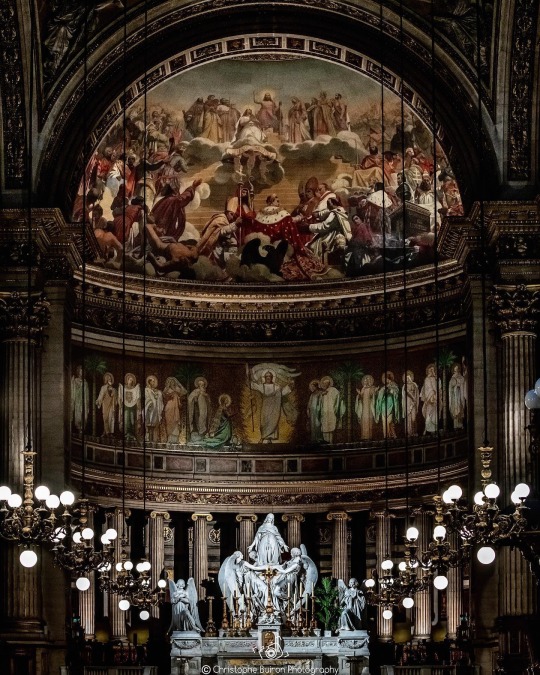
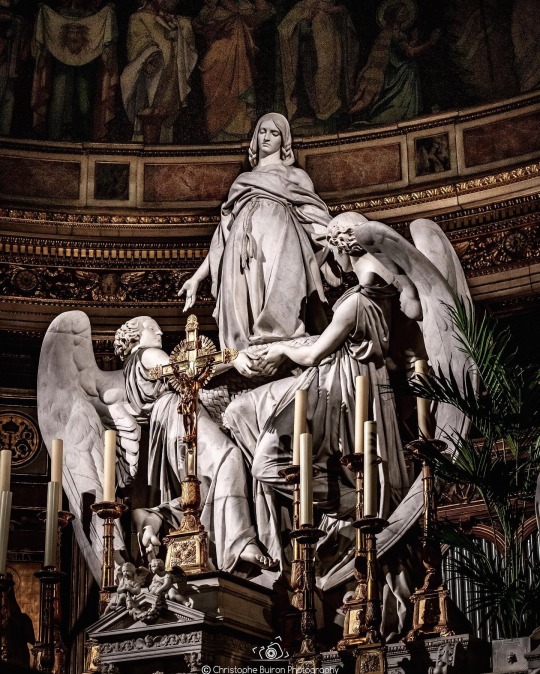
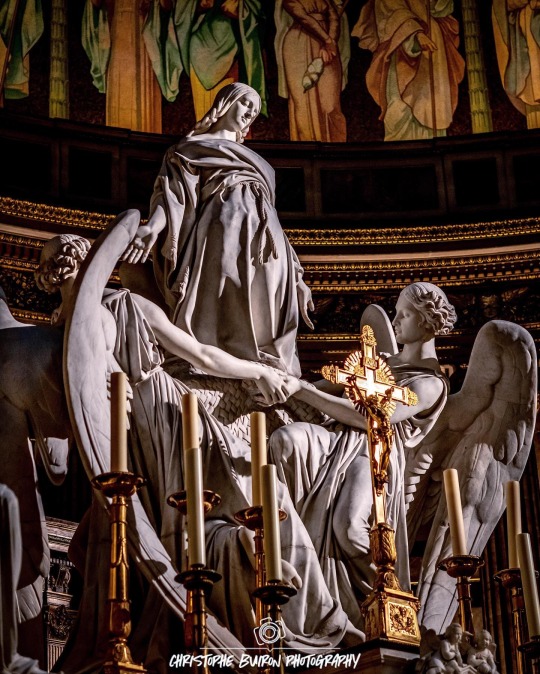
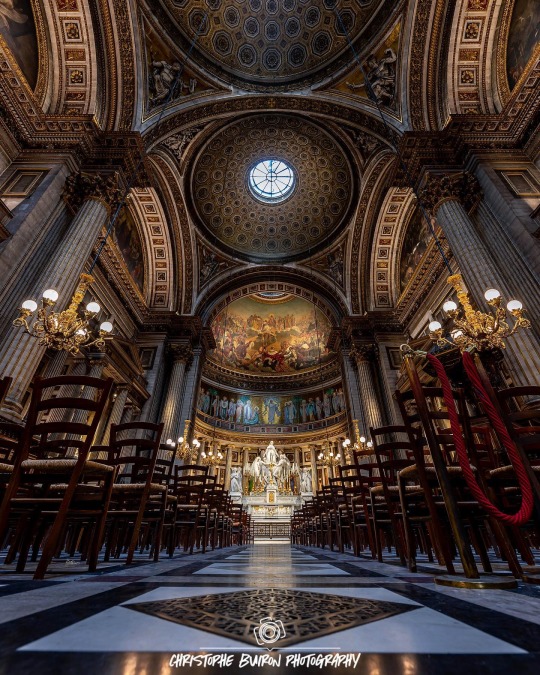
In 1806, Napoleon Bonaparte would sign the decree for the construction of a temple in honor of the glory of the French army: “...it will be the most august and the most imposing of all...Reward with which the victor of kings and peoples "The founder of empires rewards his army."
A competition was called and the project of the architect Pierre-Alexandre Vignon was chosen for the construction of the Church of the Madeleine, Paris. Today considered one of the best examples of neoclassical architecture, its model was the Maison Carré (Roman era).
Neoclassicism disappears when you enter its interior, where the baroque surrounds the walls, only the coffered vaults remind us of the majestic Pantheon of Agrippa.
Its construction lasted eighty-five years due to political instability in France at the end of the 19th century 18th and early 19th. The political changes of the time caused its use to be modified several times. It was about to be a railway station. Between 1835 and 1837, Jules-Claude Ziegler painted “L'Histoire du christianisme” in the apse and between 1835 and 1857, the Paris-based Italian sculptor Marochetti carved the figure of Mary Magdalene for the altar.
One of the most important pieces of the church is the organ from 1846, the work of Aristide Gavillé-Coll.On the outside, the 52 Corinthian columns give it an imposing appearance and support the pediment, the work of the sculptor P. Lemaire, which represents The Last Judgment, which was made in 1833.
Fhoto ©️Buiron Christophe
247 notes
·
View notes
Text
Twisted wonderland nationality headcanons
BTW NONE OF THIS IS CANON I DON'T THINK AND IT'S ALL MY OPINION FEEL FREE TO AGREE OR DISAGREE JUST DON'T HATE ON ME 💔💔💔💔💔
Heartslabyul:
Riddle rosehearts: British
Trey clover: British
Cater diamond: American
Deuce spade: British
Ace trappola: British
__________________________________________
Savanaclaw:
Leona kingscholar: Kenyan
Ruggie bucchi: Kenyan
Jack howl: American
__________________________________________
Octavinelle:
Azul ashengrotto: Danish
Jade leech: Danish
Floyd Leech: Danish
__________________________________________
Scarabia:
Kalim Al asim: Moroccan
Jamil viper: Moroccan
__________________________________________
Pomfiore:
Vil Schonenheit: German
Rook hunt: Ivory coast
Epel felmier: Sámi / Finnish
__________________________________________
Ignihyde:
Idia shroud: Greek
Ortho shroud: Greek
__________________________________________
Diasomnia:
Malleus Draconia: French
Lilia vanrouge: French
Silver: French
Sebek zigvolt: French
__________________________________________
Staff:
Crewel: British
Trein: French
Vargas: Italian
Crowley: French
__________________________________________
other characters:
Neige: Belgian / French
Chenya: British
Rollo: French
__________________________________________
Now for brief explanations:
I hc Most of heartslabyul as British because of Alice in wonderland (Set in Britain) and most of the characters are from the Queendom of roses. I Hc Cater as American because it just fits tbh.
I hc Leona and Ruggie from Kenya because that (allegedly) where the lion king is set in. I hc Jack as american because it fits (x2)
I hc all of octavinelle as Danish because of the little mermaid statue in Copenhagen and the little mermaid movie itself is set in Denmark.
i hc Scarabia as Moroccan because Aladdin is set in a Arabian country (Not said which one specifically) but i chose Morocco because it just felt like it fit.
I hc Vil as German because 1( The evil queen is German 2( Schonenheit is a German name. I hc Rook from ivory Coast because he's canonically from sunset Savanna but I wanted to choose a African country that speaks French as the main language so I picked that. I Hc Epel as Sámi, because I saw a post about how his hometown models a lot after Sámi culture, I hc that he is Sámi from Finland.
I feel like ignihyde is very self explanatory, Idia is based off Hades (Greek god of the underworld) and the Isle of woe resembles Greece
I hc Diasomnia is French only because Sleeping beauty takes place in france.
I hc Neige as Belgian mostly because He's supposed to be snow White (German princess) but his name is in French, And Belgiums main three languages are German, French and dutch.
I hc Crewel as British because he's from the Queendom of roses
I hc Trein as French because it feels right idk
I hc Vargas as Italian because Vargas is a Italian last name (i think)
I hc Crowley as French because im pretty sure he's a fae and probably from briar valley
The others are pretty explanatory I think...?
#twst#twisted wonderland#riddle rosehearts#ace trappola#deuce spade#cater diamond#trey clover#leona kingscholar#jack howl#ruggie bucchi#azul ashengrotto#jade leech#floyd leech#kalim al asim#jamil viper#vil shoenheit#epel felmier#idia shroud#ortho shroud#rook hunt#malleus draconia#lilia vanrouge#silver twst#sebek zigvolt#dire crowley#divus crewel#ashton vargas#mozus trein#sam twst#rollo flamme
60 notes
·
View notes
Text


The Restoration of the Roman Republic ... in the Middle Ages? The Forgotten Commune of Rome
Today it seems men often have Rome on their minds with Tik Toks and polls indicating that men often think about Rome on a daily basis. I'm assuming that most of these thoughts revolve around the Roman Empire, lesser so the Roman republic, some the Eastern Roman (Byzantine Empire), and few think about the Roman monarchy. However I guarantee that almost no one thinks about the medieval Roman Republic known as the Commune of Rome.
In the 12th century central Italy was directly ruled by the Pope through the Papal States. One of the hot topic political issues of the day was the "investiture controversy", which was debate over who had the power to install bishops and other important clergy; the Pope or secular authorities. This evolved into a debate on who would have ultimate governing authority, the Pope, or the secular government, most notably the Holy Roman Empire. At the time, many cities in Italy were growing disgruntled with the rule of the Pope and the rule of nobles who supported the Pope. This resulted in popular uprisings in which cities overthrew the Papal government and declared themselves independent, thus forming various city states and communes in Italy.
In 1143 a wealthy Italian banker named Geordano Pierlione led a revolt against Papal authority, kicking the Pope out of Rome and declaring an independent Commune of Rome. The next year a monk and priest named Arnold of Brescia arrived in the city, becoming the intellectual leader of the movement and establishing the new Roman Republic. Arnold was a controversial reformer who railed against abuses of Church and Papal authority, decried Church corruption, and advocated a thorough reformation of the Church. Among his ideas he believed that clergy needed to return to apostolic poverty, renouncing all wealth and ownership of property, and also renouncing secular political power. Here's a statue of him in Brescia, Italy today.

With Arnold at it's head a new Roman government was formed and modeled after the ancient Roman Republic, with 56 senators who were not of noble class, 4 from each of Rome's medieval districts, and executive authority invested in a "patrician". The new republic refused to use the title "consul" as it had become an inherited noble title after the fall of the Western Roman Empire. Nobles and aristocrats above the rank of knight were not allowed and thus most noble titles were abolished.
Of course the Pope, then Lucius II, was not going to tolerate such a rebellion and attempted to take back the city. In 1145 he formed an army and laid siege to the city. Amazingly the Romans drove away the invaders, with Pope Lucius II being killed in the battle after being bonked in the head with a rock.
The new republic flourished; drafting news laws, reforming medieval Roman society, making alliances with other Italian city states and war with others, setting up courts, and minting coins.
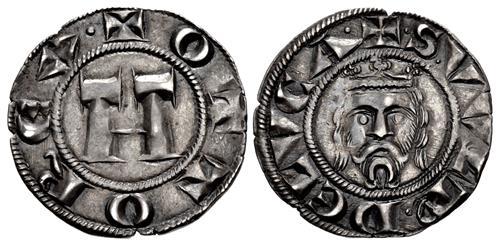
The Roman army was reformed, and a new capital building was constructed on the Capitoline Hill known as the Palazzo Senatorio (the Senate Palace), which still stands today but is much different after being heavily renovated by Michelangelo in the 1530's.
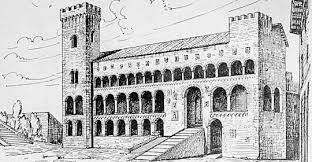
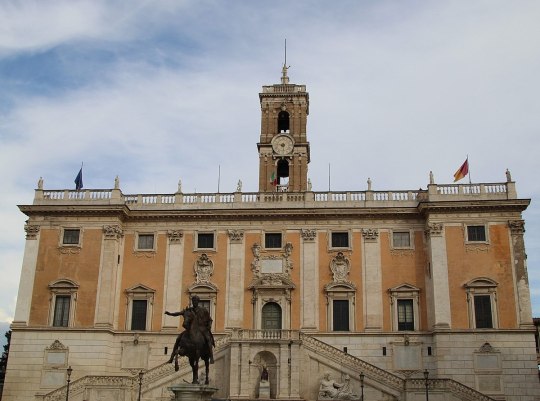
Originally the new Roman Republic swore fealty to the Holy Roman Emperor. However Rome and the Empire had a falling out. In 1149 the Roman Senate invited the German king Conrad III to the city to be coronated Roman Emperor. Rome's enemies were growing, so the Roman Senate offered Conrad this title in return for protection. Conrad had already been elected as Holy Roman Emperor and was due to be coronated, but the Roman Senate was proposing that he be THE Roman Emperor, as in like, a real Roman Emperor whose authority is defined by the Roman Senate, and not a Holy Roman Emperor whose authority was defined by the Pope and a loose confederation of high ranking German, Italian, Austrian, and Czech nobles. In the Holy Roman Empire the emperor is elected by the highest ranking nobles of the land. The Roman Senate was claiming that it had the authority to choose Roman emperors as the senate did during the ancient Roman Empire. Well, lets just say that Conrad probably didn't take too kindly to the Roman Senate attempting to usurp the governing structure of the Holy Roman Empire. In the middle ages a group of lower class burghers and knights cosplaying as Roman senators was not a good basis for a Europe spanning universal imperial monarchy. When Conrad died he was already cutting a deal with the Pope to snuff out the republic.
Conrad died in 1152 but his successor, Frederick Barbarossa continued the deal with the Pope to end the Roman Republic. It was one of the few times Frederick and the Pope agreed on anything. In 1155 a combined Papal/Imperial army invaded Rome. The city quickly fell and Arnold of Brescia was captured and burned at the stake. His ashes were scattered into the Tiber River.

Amazingly the Roman Republic lived on. Frederick Barbarossa was coronated by Pope Adrian IV as Holy Roman Emperor, an act which led to a new revolt among the Romans. Frederick put down this revolt, killing 1,000 Romans in the process, but afterwards he simply left the city and never returned after becoming bogged down in the complex politics of Italy. The Pope also left Rome, having to deal with a papal schism, resulting in no one being left in charge of the city and thus another restoration of the Roman Republic.
In 1167 Rome made war on the neighboring city of Tusculum, a long time rival of Rome who had supported the Pope and became a papal capital after the foundation of the republic. The Count of Tusculum appealed for help to the Holy Roman Empire, and Frederick I sent a small army of 1600 men. The Romans had an army of 10,000 made up of peasant militia who were poorly armed and poorly trained. While heavily outnumbered the Imperial army consisted of well armed and trained knights and professional soldiers. The Imperial army easily defeated the Romans at the Battle of Monte Porizio on May 29th, 1167, a battle which would later be called, "the Cannae of the Middle Ages". The Imperial army would continue to march on Rome, but by a stroke of luck for the Romans would be struck with the plague and forced to turn back. The Romans got their revenge against Tusculum in 1183 when they conquered and burned the city to the ground Carthage style.
The beginning of the end of the republic came in 1188 when Pope Clement III made a power sharing deal with the senate in which the people would elect senators but the Pope would have to approve the senators. The senate agreed to this in order to secure the protection of the Pope as the Holy Roman Empire was still a threat. Over the coming decades popes would reduce the number of senators until by the early 13th century, there was just one. Soon that single senate post was directly chosen by the Pope, and eventually it became a hereditary position. Before you knew it, French and Spanish nobles were becoming Roman senators and Roman senators ruled as autocrats at the behest of the Pope. By the end of the 13th century, the Roman Republic was dead.

202 notes
·
View notes
Text

The Legend Christopher Lee and his wife Danish painter and former model Birgit Gitte Lee with his 1966 Mercedes-Benz 300 SE.
The great Sir Christopher Lee:
- He was the only Lord Of The Rings cast member to meet Tolkien.
He played Dracula 12 times.
- Writer Ian Fleming, his cousin, used him to create James Bond.
- During his career he acted in almost 280 movies.
- Entered the Guinness as the most cited actor on the screens.
- Spoke fluent English, French, Italian, Spanish, German, Swedish, Russian and Greek.
Christopher Lee At 90, he released the heavy metal song "Let legend Mark Me as the King," making Lee probably the oldest heavy metal singer ever.
The legend, the one and only Christopher Lee, the man who lived a hundred lives left us on June 7, 2015.
#christopher lee#actor#celebrity#celebs#vibes#good vibes#lifestyle#style#aes#aesthetic#aesthetics#fashion#vogue#mood
286 notes
·
View notes
Text
Too Pink for me- Logan Howlett +18
02: The Wolf and the Rabbit

Paintings were never really loved for what they were.
People admired the beauty, the reflection of the artist's imagination captured on the canvas.
But could anyone truly love a painting by seeing beyond its surface, embracing only its meaning?
When has anyone ever appreciated a painting while being fully aware of the story it really tells?
A sea of praise, received by those who simply admired the artist's skillful creation.
________________________________________
Leaving the ancient lands of Europe behind and drawing closer to the vast American landscape, we find ourselves in Westchester County, New York. Unlike the beautiful Venice, cradled by the sea, Westchester was a colder place, embraced by forests.
Away from the bustling city, nestled within the woods, stood the X-Mansion, a classical structure amidst the modern cities of the United States. Majestic in its presence, this grand building, now a school, was reminiscent of the old European buildings, known for their classical architecture, fit for kings.
The view was breathtaking for the young Italian, who anxiously moved her legs beneath the soft fabric of her floral dress. She could feel the cold seeing through the structure of the Jet-X, an electrifying sensation that reminded her she was no longer in warm, sunlit Venice. Everything about this journey thrilled her, and through the material of the vehicle, she could already see the mansion in the distance, making her even more nervous. Her lips stretched into an eager smile, while her hands gently traced her thighs in a nervous gesture.
Calm down, calm down, Rosellina. You must make a good impression.
The artist reminded herself. Although she knew she rarely needed words to charm others.
"One step at a time, one hope, then another," she whispered to herself, as if it were a mantra.
Ororo, from the pilot's seat, heard Rosellina's voice although she couldn't make out the words from afar, and simply smiled with amusement. She knew the girl was nervous.
"You haven't slept at all," Ororo remarked, referencing the advice she had given Rosellina a few hours earlier. Rosellina lifted her head and laughed nervously, nodding. She remembered how Ororo had suggested she sleep, as it would be a long journey, but her nerves and the anticipation of this new chapter in her life had kept her wide awake.
"Don't worry, no one there bites," Jean assured with a smile.
Ororo glanced sideways at Jean, though a particular individual was on her mind-someone who should keep his thoughts private and often blurred them out impulsively.
"Well, not all of them," Ororo murmured under her breath, reminding herself that she would need to have a word with that person upon Rosellina's arrival.
More than a person, Ororo had in mind a man whose behavior often bordered on the animalistic.
And there he was, pacing around the mansion, trying to stave off his boredom.
Logan.
Logan Howlett, the infamous Wolverine. A man who was blunt, stoic, with more than a few anger issues, doing what he wanted, when he wanted. He was highly allergic to what others thought of him, indifferent to whether his actions were right or wrong in their eyes. A man with nearly two centuries of life behind him, far from being a model human being, and certainly no friend of polite conversation.
Logan hated many things, and his list was longer than any spoiled child's Christmas wishlist. Not to mention, humanity itself disgusted him. His happiness was rooted in smoking and drinking. He smoked like a poor devil with a serious nicotine problem-more smoke billowed from his mouth than from a chimney in winter. He drank so much that it was common for his natural scent to be a mix of alcohol, sweat, and a hint of something that could only be described as the essence of the woods.
Among the things he despised was being treated like a babysitter. This was a frequent occurrence at the mansion-getting stuck playing nanny while the rest of the team went off on small missions, usually involving tracking down mutants causing chaos or responding to what Charles pinpointed through Cerebro.
Charles had been urging him to become a teacher at the school, but Logan had no patience for dealing with kids. He'd probably throw them out the window before listening to a single complaint, so he refused to take on a role he couldn't picture himself doing. He was a bitter soldier, not someone interested in raising other people's children.
Yet, that didn't spare him from being a substitute teacher or a frequent assistant in simulations, or from playing nanny when everyone else was out and he wasn't included in the mission, thanks to Scott's kind remarks about his impulsive nature.
Frustrated, Logan leaned against the wall near the front door, arms crossed. Being idle while the others taught, and having the displeasure of seeing Scott in the hallway from time to time, didn't help his mood. Logan and Scott's relationship had deteriorated further from the rocky start it had when Logan was marked as the sole culprit for the flirtations between him and Jean, Scott's girlfriend.
It had worn him down-the mixed signals from Jean, as if she both wanted and didn't want him, and how Logan was always the one to lose out in the end. Despite the bitter taste Jean left, it was the same feeling he got from whiskey when he drank it. Bitter and burning, searing his throat, hard to swallow, yet creating an inexplicable addiction within him.
An addiction that was clearly unhealthy. Toxic, both physically and mentally.
And like the taste of whiskey, the Canadian found himself submerged in Jean's essence. He recalled her particular scent, and those eyes that often looked at him with a teasing glint-it was intoxicating. I have longed to see her once more.
Though, of course, he had no idea where the hell she had gone. He only knew from Bobby, who seemed to keep tabs on everything happening at the school, that they had gone to Italy. What were they doing in Italy? They'd been gone for two days now, and he was smoking more than usual due to the anxiety.
"You're going to have a meltdown, Logan," Logan was slightly startled and turned to see Rogue, the one that couldn't touch anyone with her bare hands.
"I don't know what you're talking about, kid," Logan replied indifferently, as if Rogue wasn't the person who knew him best around here.
"Yeah, well, lying isn't your strong suit, you know," she said with a little laugh, leaning against the wall beside him.
"That's because I don't care to lie, so I'm not doing it now," I responded.
Lies upon lies. Yes, he was lying to himself more than to Rogue.
"Well, if you say so, I'm not going to question the babysitter," Rogue teased him lightly.
Logan raised an eyebrow at her before turning back to the door, his lips curling into a slight smile.
Like a dog that had just heard his master's keys jingling from a block away, Logan pushed himself off the wall when his sharp ears detected the sounds of the Jet-X. Rogue looked at him with accusatory eyes, almost mentally shaking her head. She wasn't a big fan of Logan's strange fixation on Jean, and seeing him act like this almost made her want to touch Logan with her bare hands just to knock him out for a while so he'd stop acting like a headless chicken whenever he came to the red-haired woman.
The door swing open after a few minutes. Jean and Ororo made sure both sides were fully open so Rosellina could pass through easily when she arrived with her things.
"Logan," Jean said first, finding the tall man standing in front of her, almost as if he had been waiting for her.
"Hey, Jean," Logan replied quietly, almost gently, dropping his usual gruff and indifferent tone for a moment.
Logan met Jean's flirtatious eyes for a moment, and he wondered, did she do it on purpose, or was it just her natural state? Because it seemed only he ever fell prey to that doe-eyed look of hers.
Ororo cleared her throat, suppressing a sigh at the all-too-familiar scene. Her words were more than just unheard by Logan's rather sharp ears.
"Hello to you too, Logan," Ororo greeted, as always, remaining in the background.
She glanced at Rogue, who was watching Logan with slightly accusatory eyes.
"Ah, Rogue, I'm glad you're here. We've brought a new companion, a very sweet girl," Ororo said, leaving Logan and Jean in the background, as she often did.
When it came to getting along with the teachers, Rogue couldn't say she liked Jean. She could greet her and be polite, but she harbored no affection for her. Logan was like an older brother to her; he was the one who brought her to this place she now called home and the one she could read on when she needed a shoulder to cry on.
To Rogue, it was clear that Jean had a thing for the bad boy of the school, but to her, that's all Logan was-a man with whom she would only spend one fiery night if she could. Jean's flirting felt like a game that had turned into a daily habit, and Rogue didn't like it one bit. To her, it was the behavior of a two-faced flirt.
Rogue shifted her gaze away from the toxic zone, softening her expression as she smiled at Ororo.
"A new companion?" Rogue looked genuinely excited.
There weren't many girls her age at the school besides Kitty, and the thought of someone close to her age gave her a thrill of excitement.
"You went all the way to Italy for a girl?" Logan asked gruffly, searching for the supposed newcomer.
"Yes, it was a direct favor requested by an old friend of the Professor's," Ororo responded to Logan.
Logan raised an inquisitive eyebrow at Ororo's words. As always, he was left out of the loop in the X-Men's group discussions, or at least unaware of their plans until the last minute, only learning half of what was going on.
He let out a tired, mocking laugh.
"Of course, since you never tell me anything, I was totally up to speed on the situation."
Ororo shot him a look that discreetly said, -Please, behave-.
"We didn't have time to inform you, I'm sorry," Jean offered with a gentle smile.
That look. Logan regulated his breathing and looked away, placing his hands on his hips. Maybe he could always argue with Ororo, but it only took Jean's most logical words for him to drop the conversation and accept it.
"And where's the kid?" he asked, glancing at Ororo.
But his keen sense of smell almost answered his question instantly, ignoring any other noise after he asked. His nostrils filled with a sweet scent, as intoxicating as a field of blooming flowers. Could a perfume ever smell as good as the fragrance he detected? It was as heady as a glass of summer wine.
Logan's eyes shifted toward the door, noticing through the strong sunlight streaming into the mansion a small figure approaching. His eyes widened slightly as he saw the woman, the one who seemed to carry with her the most enchanting fragrance any girl would wish to have in her perfume collection.
Pink hair, fair skin lightly dusted with brown freckles. She was dressed in a floral dress, fitting for a girl who might live far away in the countryside in her own fantasy world.
Rosellina struggled a bit as she dropped her luggage to the floor, almost harshly but unintentionally, her delicate hands barely managing to hold onto it as it nearly slipped from her grip. The sound of the suitcase hitting the mansion's expensive wooden floor echoed. The Italian winced and let out a nervous laugh.
"Sorry, I'm not one of those mutants with extraordinary strength..." she admitted with embarrassment.
After another nervous chuckle, she straightened up and tossed her long hair back with the help of her arm, sighing a bit from the effort. That's when her eyes met Logan's. Rosellina's eyes widened slightly, having to tilt her head up to look at a man who was probably about 190cm tall. His figure was imposing, his features exuding ruggedness, and his body seemed as though it had been sculpted by Michelangelo himself under that shirt, surely. Not to mention her mischievous eyes saw more than they should. He was a man whose masculinity was evident in his aura and posture, staring at her with those piercing eyes.
Rosellina felt exposed under his gaze, as naked as the muses in the paintings of Velázquez or Goya. This man was looking her up and down without shame, without any semblance of manners. A gentleman wouldn't look at a woman so intrusively, at least not in Rosellina's mind. But she could see how his gaze finally settled on her eyes, a rough, fiery eye contact that... made her sense more, something beyond the roughness that this man, with an almost animalistic aura, projected as he looked at her as if she were prey.
Logan, on the other hand, didn't even know where to begin looking once the Italian girl stepped through those doors. His gaze eventually anchored itself to her eyes, as firmly as an anchor buried in the sand, keeping the ship from drifting away. Those emerald eyes, so innocent, so full of life-Jean's gaze had never been so naturally flirtatious, so damnably sweet that it stirred his most primal instincts.
What's wrong with me?
Logan asked himself, unable to tear his eyes away from hers, from that face. This little one had him rooted in place, staring at her like some creepy old fool. He felt like an idiot, unable to say a word at first glance, just staring.
Without a doubt, he'd add this girl to the list of things he hated.
Why?
He hated how she made him feel like a boy standing there, like an animal without reason. That dazzling appearance, so eye-catching. Those intrusive eyes that seemed to want to read his entire being, as if begging to be let in. Everything about her seemed designed to be adorable, to be liked by people, or so it seemed. He wondered if her mutation was driving people mad, and he was close to the mark, though not in that sense.
His gaze hardened in the face of her bright presence, wanting to strip away his senses to rid himself of this weakness toward her appearance.
She's just a damn kid, Logan! For God's sake!
He screamed at himself mentally, wishing she'd stop looking at him like that, so curious, so submissive. As if she were expecting something from him. And he wasn't going to give in, no way.
"Logan?" Logan snapped out of his trance at the sound of Ororo's voice.
The dark-skinned woman had snapped her fingers to get his attention. Logan had shut down his entire system and wasn't aware of any conversation that might have been happening.
"What?" he responded gruffly.
Ororo sighed, not understanding what was going on in his head.
"This is Rosellina. She's been living in Venice all this time. Her father works at the Pentagon," she informed him about the new arrival, hoping for some semblance of politeness from Logan.
Rosellina looked at Logan with those curious eyes. He was an interesting figure, to say the least-she had never encountered such a walking embodiment of masculinity on the streets of Europe. But she had the feeling that this person didn't like her.
"My name is Rosellina Wilson, a pleasure to meet you."
Rosellina was about to step toward him but hesitated. Back in Europe, she would have greeted him with two kisses on the cheek. It was her foreign custom wanting to emerge, but she knew that on this side of the pond, it wasn't appropriate. Besides, even if she stood on tiptoe, she couldn't reach him, nor would she have the courage to do so. Something about his piercing gaze made her legs tremble.
Was it being surrounded by so many warm, good people that made her feel so small? Or was it him?
Logan raised an eyebrow at her foreign accent, a clear sign of her upbringing in Italy, despite her seemingly American roots.
"Logan," he responded curtly. Politeness wasn't accompanying his words today, at least not for her.
Rogue observed the tension between them, suppressing a smile, biting her lips to keep from laughing. She had never seen Logan like this; it piqued her curiosity.
She herself was struck by Rosellina's beauty. The young Italian girl evoked envy and jealousy for her naturally enchanting appearance without even trying. But not in a bad way-there was more a sense of admiration. Plus, the way she made the great Logan react amused her.
Ororo's eyes darted back and forth between Rosellina and Logan, not understanding Logan's sour mood toward the sweet girl. The first thing she asked Logan not to do (be rude) was the first thing he did. The man was absolutely incorrigible.
"Don't look at me like that, Storm. I looked after the brats like you asked."
Logan muttered irritably, pulling out a cigar and lighting it in the middle of the conversation.
Jean watched him, suppressing a small giggle at his behavior. Although she found it curious, at the very least, why Logan was more irritable around Rosellina-he had always seemed protective of Rogue and Kitty.
Ororo, on the other hand, wasn't pleased, deciding to let Logan's attitude slide.
"Oh, thank you for your care, Logan. At least the mansion didn't burn down."
She said, rolling her eyes slightly, while waving a hand in front of her face to avoid the smoke that started billowing from Logan's cigar.
Rosellina wrinkled her nose at the unpleasant smell of smoke, letting out a small cough as the fumes invaded her nostrils without permission. She had never encountered someone so rude and indifferent to the comfort of others around them. She waved her hand in front of her, trying to disperse the smoke, and took a step back on her small heels.
"I believe this is a smoke-free space, Signore. It's a school," Rosellina said in a polite tone, offering a small smile.
"That's not right."
She added, to which Logan raised an eyebrow at her, pulling the cigar from his mouth and letting the smoke drift in another direction. He could hear Ororo trying to suppress a smile.
"Don't lecture me, brat," he warned immediately.
"I'm just advising. There are many children here; you're not setting a good example. Aren't you a teacher?"
Rosellina looked at him curiously, placing her hands behind her back. Logan stood still for a moment, taken aback by how she was trying to "educate" him. The situation was amusing to the others who weren't involved in the conversation. Rogue watched with admiration, thinking, "I like her," since no one usually dared say anything to Logan.
"Besides, I'm not a child; I'm nearly 24 years old," she corrected him with a sweet smile.
Logan stared at her as she smiled sweetly, like a little angel who would never harm a fly. Knowing he was the target of the moment's mockery didn't sit well with him. Logan took a deep breath, trying to steady himself, avoiding an outburst.
This little girl had the knack for making him angry without even trying, not to mention the audacity to keep trying to school him.
"Listen, Pinky. I don't care if you're 24 or 30. I'm nearly 200 years old, and to me, you'll always be an utterly impertinent brat," he said, not bothering to hide the disdain in his tone.
Rosellina was stunned by the first revelation-was he really nearly two centuries old?
Before she could respond, Logan blew out more smoke, nervously puffing on his cigar.
"And I can smoke wherever the hell I please. I don't need your little pink health flag telling me what to do and what not to do. You got it?"
He warned her again, his tone menacing, his gaze like a freshly loaded gun aimed right at that pink point. He leaned in dangerously close before lowering his voice.
"If you don't want smoke blown directly in your face next time, I suggest you save your lectures and move your pink ass out of my business."
Rosellina stood stunned by such aggression; she hadn't even intended to anger him. Was he really that irritable?
She watched as he stormed away from her, taking long strides far from the main entrance, leaving clouds of smoke in his wake.
"Logan, Logan!" Ororo called after him, trying to follow with a few steps. "Don't be rude, apologize to Rosellina!"
Logan didn’t bother to turn around; he had no interest in staying in the same space as the one who specialized in short-circuiting his temper.
“Blow me,” Logan spat out harshly before disappearing around the corner of the hallway.
A long silence settled among the four women at the entrance. The Italian looked at the three women, even at the one whose name she still didn't know, who seemed to be stifling a laugh at the situation.
"Did I do something wrong?" Rosellina asked, worried about Logan's irascible behavior.
“No, you didn’t. I actually found it amusing,” Rogue commented, smiling at her.
“Logan’s like that, don’t worry. Don’t take it personally,” Ororo said with an apologetic smile.
“I wasn’t going to…” Rosellina murmured to herself, wondering what the man's problem was. In the background, she could hear Jean saying she’d go prepare the room.
Why doesn’t he like me?
The little rabbit pondered, unable to understand the fierce wolf.
____________________________________
The vision of something you don't understand can always lead you to madness.
Not understanding can lead you to rage.
The most arrogant being on earth is always unnerved by the idea of not comprehending something when they believe they know everything.
#fanfic#hugh jackman#logan howlett#wolwerine#x men#logan howlett fanfiction#logan howlett x fem!reader#logan howlett x reader#logan howlett x oc#logan howlett x you#james logan howlett#x men fanfiction#fanfiction
44 notes
·
View notes
Text
Hey it’s @flangstynerd AKA @scinerdwrites but on a new blog. There’s been a lot of changes in my life in the past couple years, and as a result I wanted to make a new blog for jumblr. Several of my friends are on here and I got inspired just to reblog their stuff :D
What’s Changed:
I converted to Reform Judaism from Catholicism in May of this year. I’ve been doing this conversion journey since November 2021, but I didn’t want to announce it to the internet until everything was done and finalized. After 2.5 years, everything is finally official.
I plan to be slightly more active on tumblr than I have been previously. I named my blog based on my Hebrew name (Tzipporah), and how I wish to provide a treasure trove of info.
I would say my ideals of practice are some kind of cross between Conservative and Reform Judaism.
I’ve acquired some chronic illnesses and disabilities over the years. My body has been tough to me for the last couple years.
I have a Jewish podcast that has several eps already now. Our podcast has a tumblr blog, but please dm me for more info for safety reasons.
What is the same?
I’m still Chinese, Hmong, and queer (pronouns: they/she). I’m still culturally Italian as an adoptee. Those are not going anywhere lol.
Still have several varieties of neurodivergence (autism, PTSD, anxiety, psychosis, some kind of unclear mood disorder). My brain likes playing it rough. I have healed a lot of trauma, but the other stuff is still a wild ride.
Still don’t plan to be super duper active as I have a scientist day job. But if I ever see a great jumblr post from one of my friends or otherwise, I’d be happy to reblog.
Still hold a lot of nerdy interests: Disney fandoms (Tangled the Series, Encanto, etc.), classic literature (Shakespeare, 19th century European literature), certain manga/anime (Fullmetal Alchemist and Death Note)
Still can be quite critical of the things I enjoy.
About Me (Jumblr Edition):
Favorite Torah character (first 5 books of Moshe only): Tzipporah (I relate to her so much as someone who came into the tribe and a nontraditional wife; the bridegroom of blood scene is iconic)
Favorite Tanakh character: King Shaul (very relatable for me as I feel like I struggle from similar challenges as him: mental health issues, low self esteem, and paranoia) followed close behind by Esther (she’s a role model for me, and Purim is my favorite holiday)
Favorite Jewish Holiday: Purim (relatable message especially for these dangerous times; also a lot of fun while still being a relatively low stress holiday)
Hamantaschen vs. Latke: hard choice but I have to go with traditional poppyseed hamantaschen. They’re older (~1500s) than the potato latke (late 18th to 19th century) and store better.
Areas of interest: Jewish history, Tanakh discussion, Jewish culture (food especially; I love cooking and baking), Jewish learning (especially more about Jewish life in Israel)
What Jewish value can I improve on? Chesed; I find it hard to always express loving-kindness, and my impatience and temper can get the better of me. I’ve been trying to improve on these for the past two years but 5784 has been especially trying.
What Jewish value is very important to me: Ahavat Yisrael; it is important that we as a people stay united. United we rise, divided we fall. I admire all legitimate Jewish streams (side note: Messianic Judaism is not a Jewish stream)
Important note: If something says #goyim don’t touch, listen and obey! Don’t even try with the antisemitism.
19 notes
·
View notes
Text
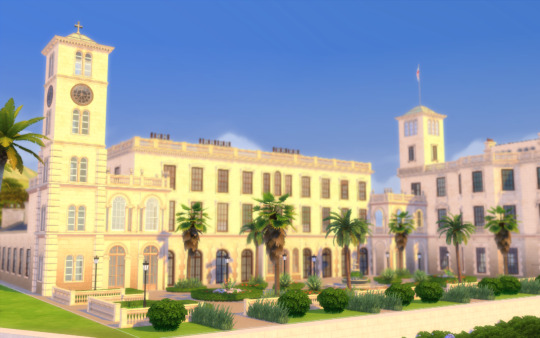

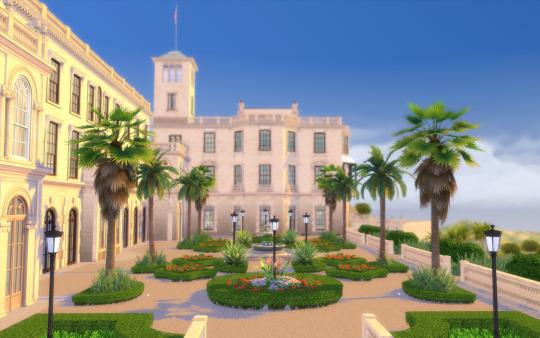

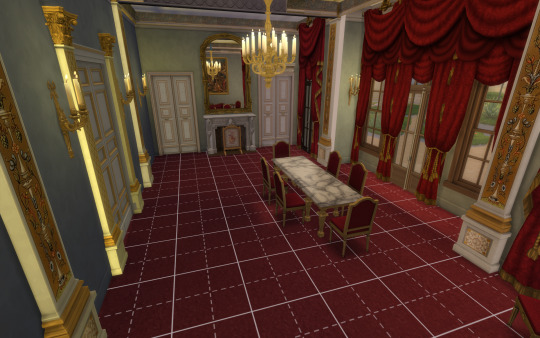
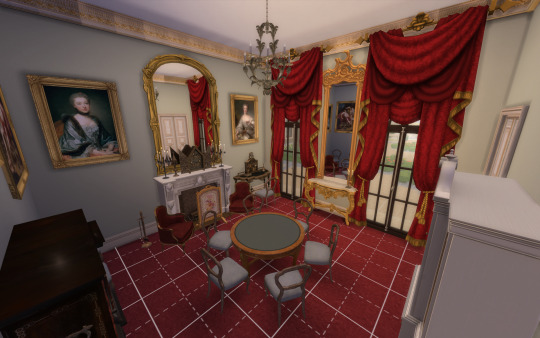

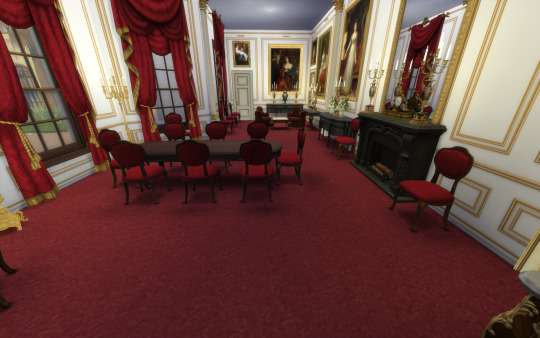
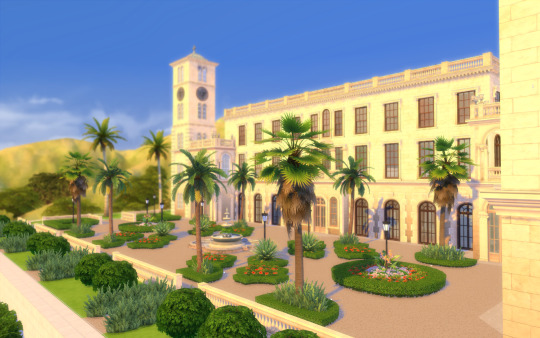
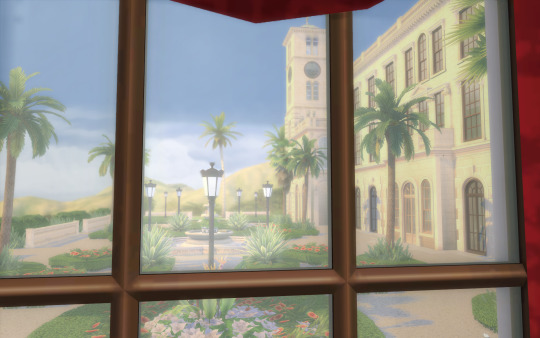

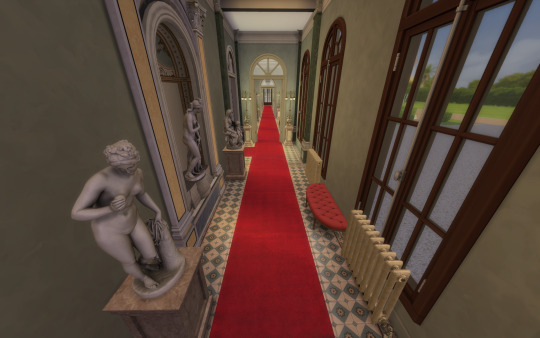
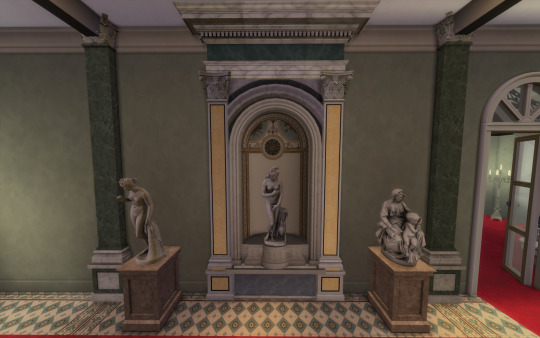
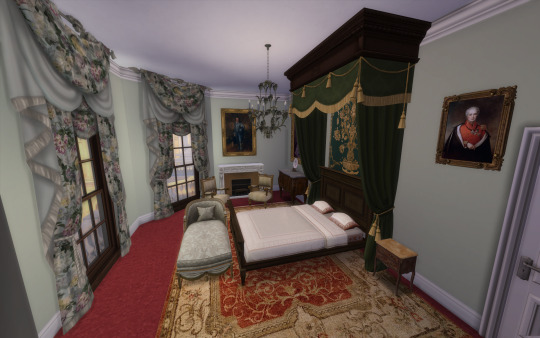
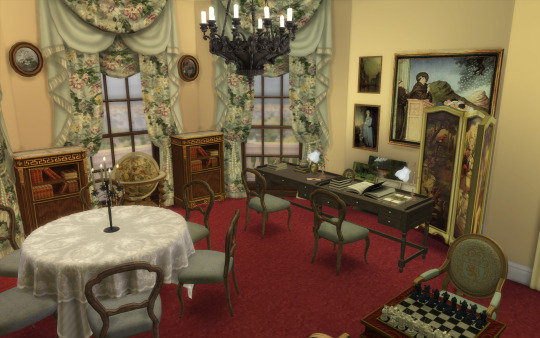
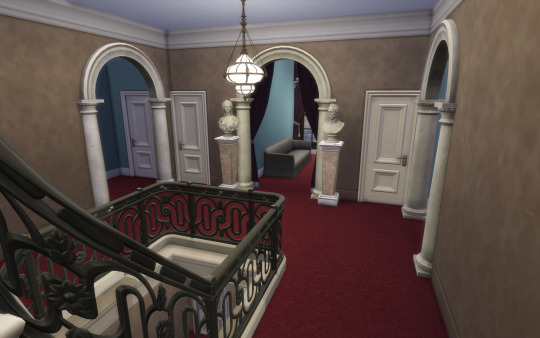
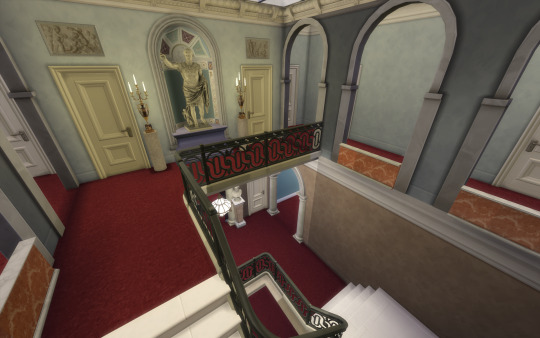

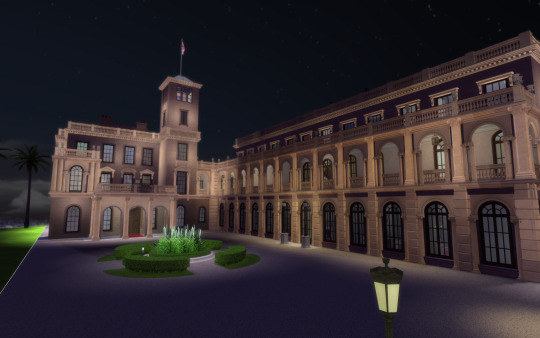


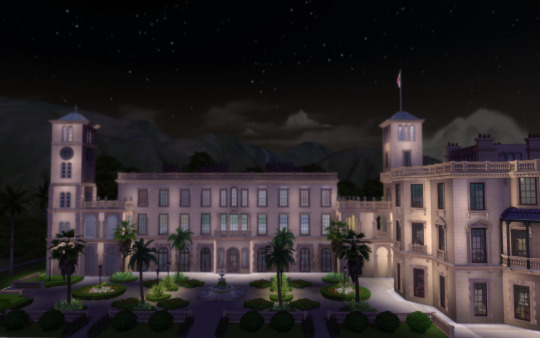
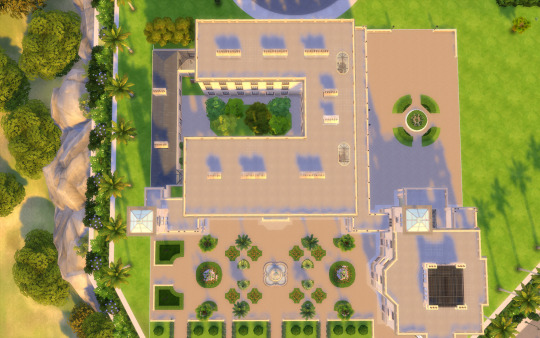


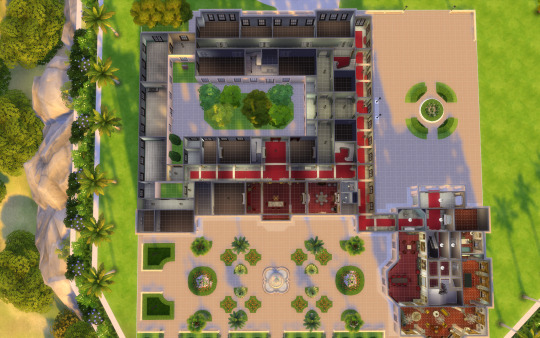
Osborne House
Hace un instante
Hi guys!!
I'm sharing Osborne House . This is the 11th building for my English Collection.
This was also a request from one of my patreons, so I hope it does not desapoint.
History of the house: In 1843 Queen Victoria and Prince Albert were looking for a seaside retreat for their growing family to escape the pressures of London and Windsor. The Osborne estate, then owned by Lady Isabella Blachford, was recommended to them by the Prime Minister, Sir Robert Peel (1788–1850).
The estate was initially leased, then bought in May 1845 for £28,000. As the existing house was too small, an extension was required. Queen Victoria and Prince Albert did not want to be restricted by the Department of Woods and Forests, which was then in charge of all government building, so Prince Albert bypassed the department’s architects. Instead he commissioned Thomas Cubitt (1788–1855), the master builder and developer of much of the Duke of Westminster’s Belgravia estate in London, to advise him.
Cubitt recommended that rather than alter the old house it would be best to build a new one, and proceeded to design it in collaboration with Prince Albert.
OSBORNE TAKES SHAPE
The first phase of building was completed in 1846 with the Pavilion, housing the private rooms of Queen Victoria and Prince Albert and the royal nurseries. The household wing, containing accommodation for members of the royal household who accompanied Queen Victoria to Osborne, was completed in 1848.
After the old house was demolished in 1848, the main wing, completed in 1851, was built on its site, and was linked by a long corridor to the household wing. The main wing was used initially by the royal children. The terraces on the north-east side of the Pavilion and main wing were designed to complement the house and are filled with the signature features of classical Italian gardens.
Neighbouring Barton Manor was thoroughly ‘restored’ by Cubitt and its outbuildings were organised as a model farm. Other building projects included estate cottages and lodges, a dormitory for male servants, and a landing house for the coastguard, with a sea wall along the coastal edge of the estate.
For more info: https://www.english-heritage.org.uk/visit/places/osborne/history-and-stories/history/#:~:text=Queen%20Victoria%20and%20Prince%20Albert,after%20Albert's%20death%20in%201861.
------------------------------------------------------------------------------
This house fits a 64x64 lot and was downsized to fit, so it lost some of its glamour.
It is not furnished except for the state rooms and some private bedrooms (for pictures and reference), as it was requested for that purpose.
Hope you like it.
You will need the usual CC I use:
all Felixandre cc
all The Jim,
SYB
Anachrosims
Regal Sims
King Falcon railing
The Golden Sanctuary
Cliffou
Dndr recolors
Harrie cc
Tuds
Lili's palace cc
Complete list of CC: https://docs.google.com/spreadsheets/d/1ybrxiDhssT3B_4My4KMjm0xNyMDkJ1kNafobQIEJLzQ/edit?usp=sharing
Please enjoy, comment if you like it and share pictures with me if you use my creations!
Early access (public release Sept-30)
Download: https://www.patreon.com/posts/105201540
#sims 4 architecture#sims 4 build#sims4#sims 4 screenshots#sims4play#sims 4 historical#sims4building#sims4palace#sims 4 royalty#ts4#ts4 download#ts4 simblr#ts4 gameplay#ts4 legacy#ts4cc#the sims 4#the sims community#simblr#sims 4#the sims#sims
41 notes
·
View notes
Text
itty bitty little northeast hcs bc the asks r dry :(((
they are NOT fun cool life of the party they are SAD GAY LOSERS i do feel this should be broadcast on national tv to confirm the canonness.
that being said. one family dinner with them is actually illegal under the geneva convention due to high level of mental torture.
things start off lovely. they go to maine's little cabin-in-the-woods (STEPHEN KING MY FRIENDS, ITS NOT COTTAGE VIBES!). he will make you wait outside if you are late. he locks the doors and laughs.
unfortuantely, they will not be within five feet of each other during baseball season, under a rule so important gov considers adding it to the constitution.
it is like a grandpa convention lets not lie to ourselves bc there's definitely a part in the night where they just reminisce about the war and vermont will show up with printed-out pictures of some battle monument model he made bc even maine's terrible signal wont stop him.
they have to get new york there by physical force, bc he is doing his level best to sneak his way out. sorry its shabbat (it's actually a tuesday). sorry lost my voice can't come (he's only over said 10 words max). sorry been hit by a car (typa guy to genuinely try and walk off a broken leg).
they have to battle not to bring up politics ooohhh because you know mass's eye is twitching at the thought of being able to debate. connecticut threatens to report him to the authorities as a communist threat. he threatens to throw him through the wall. this is normal sibling behaviour.
typa emotional repression where they'll just be arguing and bickering as normal when one of them will drop the most gut-wrenching sickening personal lore and they all will just refuse to mention it.
oooooohhh yk its got a kick to it when ur sat across from someone who literally took bllets for you telling you ab how life is collapsing around them. anyways new hammy made a salad w craisins and we better switch the topic to that.
speaking of. half of the food is completely inedible. rhode island spent so many years a pirate he has no idea how much salt is too much salt. you CAN eat delaware's food but also be aware he's known for chemical manufacturing so its a 50/50 chance you'll make it.
jersey and york, arguably the only two good cooks, are not allowed to bring food bc they unfortunately suffer from chronic cant-understand-our-families-r-from-different-italian-regions-and-food-might-be-different syndrome.
for some inexplicable reason PA becomes group DJ. the only songs on his phone are 'brand new city' by mitski and 'dont stop the party' by pitbull.
#wttt#welcome to the statehouse#wttsh#wttt headcanons#wttt new york#wttt pennsylvania#wttt massachusetts#wttt maine#wttt delaware#wttt new jersey#wttt new hampshire#wttt vermont#wttt connecticut#wttt rhode island
24 notes
·
View notes
Text
I mean on one hand the focus on "wearable" high fashion is laudable, it's a sign that the industry and its houses are understanding people as people rather than trends and it's a possibility that this is the start of something new and glorious.
And then on the other hand it's all just so uninspired and bland and cowardly, there's no art to it there's no meaning or message, it's just the same Italian sons of bitches making the same black suit their labels make every year, a formality expected rather than a method of making art worn upon the body, and these pieces of shit are still to this day only paying lip service to things like "wearable" high fashion because how many of these pieces are being designed with multiple body types in mind? Hell, how many are being designed with anything other than standard modeling sizes in mind? Labels shouldn't be allowed to be noteworthy and stand-outs for Daring to sell their clothing at a Size 14, for chrissakes.
It's all just. So banal. So droll. It makes it so that the actual movers and shakers are either the up-and-coming like Iris Van who just completely refuses to acknowledge whatever any other maison is doing, or they're old guard like Westwood just reliving the glory days when McQueen reigned like a king over London and the rest of the world was forced to sit back and watch things change in his wake.
177 notes
·
View notes
Text
I am literally foaming at the mouth
Aaaaaaaaaaaaaaah!! It's aalre!!! I love him I love him I love him so much!!! He's my 2nd fav of all the Vil kids🥰🥰
In this series I have 3 'first'
- the first fan kid I ever came up with (you'll meet her one day)
- the first I ever drew for funsies
-and Aalre the first I drew when I decide to make a series and post it
He's also the one I spent the most time drawing 🥰🥰 anyway have some fun facts or I won't be able to stop gushing over him

1) he models for his dad (Floyd) shoe brand and also started his own brand
2) je used to be an idol but got bored of it and just randomly quit
3) he's really clingy to Vil but don't get along that much with his other dad no matter how alike they are
4) he still spend a lot of time with Floyd bonding over their brand and doing a lot of collab
5) his name litteraly means 'eel king' in a mix of german and Italian.
#twisted wonderland#twst floyd#floyd leech#octavinelle#twst#disney twst#twst fanart#twst oc#twisted wonderland vil#twst fan kids#vil schoenheit#pomfiore#vil shoenheit
16 notes
·
View notes
Text
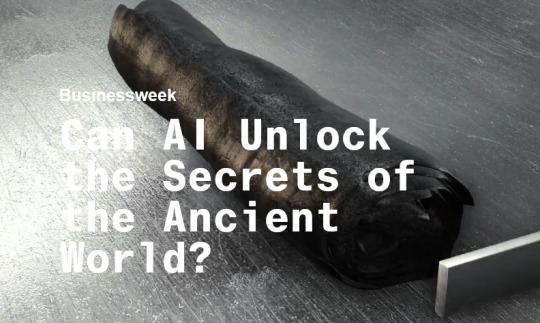
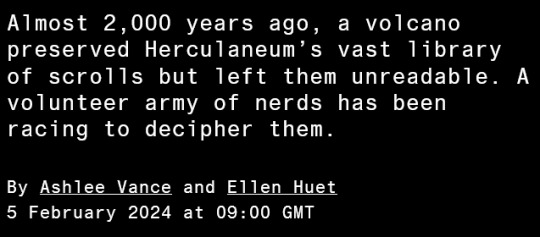
A few years ago, during one of California’s steadily worsening wildfire seasons, Nat Friedman’s family home burned down. A few months after that, Friedman was in Covid-19 lockdown in the Bay Area, both freaked out and bored. Like many a middle-aged dad, he turned for healing and guidance to ancient Rome. While some of us were watching Tiger King and playing with our kids’ Legos, he read books about the empire and helped his daughter make paper models of Roman villas. Instead of sourdough, he learned to bake Panis Quadratus, a Roman loaf pictured in some of the frescoes found in Pompeii. During sleepless pandemic nights, he spent hours trawling the internet for more Rome stuff. That’s how he arrived at the Herculaneum papyri, a fork in the road that led him toward further obsession. He recalls exclaiming: “How the hell has no one ever told me about this?”
The Herculaneum papyri are a collection of scrolls whose status among classicists approaches the mythical. The scrolls were buried inside an Italian countryside villa by the same volcanic eruption in 79 A.D. that froze Pompeii in time. To date, only about 800 have been recovered from the small portion of the villa that’s been excavated. But it’s thought that the villa, which historians believe belonged to Julius Caesar’s prosperous father-in-law, had a huge library that could contain thousands or even tens of thousands more. Such a haul would represent the largest collection of ancient texts ever discovered, and the conventional wisdom among scholars is that it would multiply our supply of ancient Greek and Roman poetry, plays and philosophy by manyfold. High on their wish lists are works by the likes of Aeschylus, Sappho and Sophocles, but some say it’s easy to imagine fresh revelations about the earliest years of Christianity.
“Some of these texts could completely rewrite the history of key periods of the ancient world,” says Robert Fowler, a classicist and the chair of the Herculaneum Society, a charity that tries to raise awareness of the scrolls and the villa site. “This is the society from which the modern Western world is descended.”
The reason we don’t know exactly what’s in the Herculaneum papyri is, y’know, volcano. The scrolls were preserved by the voluminous amount of superhot mud and debris that surrounded them, but the knock-on effects of Mount Vesuvius charred them beyond recognition. The ones that have been excavated look like leftover logs in a doused campfire. People have spent hundreds of years trying to unroll them—sometimes carefully, sometimes not. And the scrolls are brittle. Even the most meticulous attempts at unrolling have tended to end badly, with them crumbling into ashy pieces.
In recent years, efforts have been made to create high-resolution, 3D scans of the scrolls’ interiors, the idea being to unspool them virtually. This work, though, has often been more tantalizing than revelatory. Scholars have been able to glimpse only snippets of the scrolls’ innards and hints of ink on the papyrus. Some experts have sworn they could see letters in the scans, but consensus proved elusive, and scanning the entire cache is logistically difficult and prohibitively expensive for all but the deepest-pocketed patrons. Anything on the order of words or paragraphs has long remained a mystery.
But Friedman wasn’t your average Rome-loving dad. He was the chief executive officer of GitHub Inc., the massive software development platform that Microsoft Corp. acquired in 2018. Within GitHub, Friedman had been developing one of the first coding assistants powered by artificial intelligence, and he’d seen the rising power of AI firsthand. He had a hunch that AI algorithms might be able to find patterns in the scroll images that humans had missed.
After studying the problem for some time and ingratiating himself with the classics community, Friedman, who’s left GitHub to become an AI-focused investor, decided to start a contest. Last year he launched the Vesuvius Challenge, offering $1 million in prizes to people who could develop AI software capable of reading four passages from a single scroll. “Maybe there was obvious stuff no one had tried,” he recalls thinking. “My life has validated this notion again and again.”
As the months ticked by, it became clear that Friedman’s hunch was a good one. Contestants from around the world, many of them twentysomethings with computer science backgrounds, developed new techniques for taking the 3D scans and flattening them into more readable sheets. Some appeared to find letters, then words. They swapped messages about their work and progress on a Discord chat, as the often much older classicists sometimes looked on in hopeful awe and sometimes slagged off the amateur historians.
On Feb. 5, Friedman and his academic partner Brent Seales, a computer science professor and scroll expert, plan to reveal that a group of contestants has delivered transcriptions of many more than four passages from one of the scrolls. While it’s early to draw any sweeping conclusions from this bit of work, Friedman says he’s confident that the same techniques will deliver far more of the scrolls’ contents. “My goal,” he says, “is to unlock all of them.”
Before Mount Vesuvius erupted, the town of Herculaneum sat at the edge of the Gulf of Naples, the sort of getaway wealthy Romans used to relax and think. Unlike Pompeii, which took a direct hit from the Vesuvian lava flow, Herculaneum was buried gradually by waves of ash, pumice and gases. Although the process was anything but gentle, most inhabitants had time to escape, and much of the town was left intact under the hardening igneous rock. Farmers first rediscovered the town in the 18th century, when some well-diggers found marble statues in the ground. In 1750 one of them collided with the marble floor of the villa thought to belong to Caesar’s father-in-law, Senator Lucius Calpurnius Piso Caesoninus, known to historians today as Piso.
During this time, the first excavators who dug tunnels into the villa to map it were mostly after more obviously valuable artifacts, like the statues, paintings and recognizable household objects. Initially, people who ran across the scrolls, some of which were scattered across the colorful floor mosaics, thought they were just logs and threw them on a fire. Eventually, though, somebody noticed the logs were often found in what appeared to be libraries or reading rooms, and realized they were burnt papyrus. Anyone who tried to open one, however, found it crumbling in their hands.
Terrible things happened to the scrolls in the many decades that followed. The scientif-ish attempts to loosen the pages included pouring mercury on them (don’t do that) and wafting a combination of gases over them (ditto). Some of the scrolls have been sliced in half, scooped out and generally abused in ways that still make historians weep. The person who came the closest in this period was Antonio Piaggio, a priest. In the late 1700s he built a wooden rack that pulled silken threads attached to the edge of the scrolls and could be adjusted with a simple mechanism to unfurl the document ever so gently, at a rate of 1 inch per day. Improbably, it sort of worked; the contraption opened some scrolls, though it tended to damage them or outright tear them into pieces. In later centuries, teams organized by other European powers, including one assembled by Napoleon, pieced together torn bits of mostly illegible text here and there.
Today the villa remains mostly buried, unexcavated and off-limits even to the experts. Most of what’s been found there and proven legible has been attributed to Philodemus, an Epicurean philosopher and poet, leading historians to hope there’s a much bigger main library buried elsewhere on-site. A wealthy, educated man like Piso would have had the classics of the day along with more modern works of history, law and philosophy, the thinking goes. “I do believe there’s a much bigger library there,” says Richard Janko, a University of Michigan classical studies professor who’s spent painstaking hours assembling scroll fragments by hand, like a jigsaw puzzle. “I see no reason to think it should not still be there and preserved in the same way.” Even an ordinary citizen from that time could have collections of tens of thousands of scrolls, Janko says. Piso is known to have corresponded often with the Roman statesman Cicero, and the apostle Paul had passed through the region a couple of decades before Vesuvius erupted. There could be writings tied to his visit that comment on Jesus and Christianity. “We have about 800 scrolls from the villa today,” Janko says. “There could be thousands or tens of thousands more.”
In the modern era, the great pioneer of the scrolls is Brent Seales, a computer science professor at the University of Kentucky. For the past 20 years he’s used advanced medical imaging technology designed for CT scans and ultrasounds to analyze unreadable old texts. For most of that time he’s made the Herculaneum papyri his primary quest. “I had to,” he says. “No one else was working on it, and no one really thought it was even possible.”
Progress was slow. Seales built software that could theoretically take the scans of a coiled scroll and unroll it virtually, but it wasn’t prepared to handle a real Herculaneum scroll when he put it to the test in 2009. “The complexity of what we saw broke all of my software,” he says. “The layers inside the scroll were not uniform. They were all tangled and mashed together, and my software could not follow them reliably.”
By 2016 he and his students had managed to read the Ein Gedi scroll, a charred ancient Hebrew text, by programming their specialized software to detect changes in density between the burnt manuscript and the burnt ink layered onto it. The software made the letters light up against a darker background. Seales’ team had high hopes to apply this technique to the Herculaneum papyri, but those were written with a different, carbon-based ink that their imaging gear couldn’t illuminate in the same way.
Over the past few years, Seales has begun experimenting with AI. He and his team have scanned the scrolls with more powerful imaging machines, examined portions of the papyrus where ink was visible and trained algorithms on what those patterns looked like. The hope was that the AI would start picking up on details that the human eye missed and could apply what it learned to more obfuscated scroll chunks. This approach proved fruitful, though it remained a battle of inches. Seales’ technology uncovered bits and pieces of the scrolls, but they were mostly unreadable. He needed another breakthrough.
Friedman set up Google alerts for Seales and the papyri in 2020, while still early in his Rome obsession. After a year passed with no news, he started watching YouTube videos of Seales discussing the underlying challenges. Among other things, he needed money. By 2022, Friedman was convinced he could help. He invited Seales out to California for an event where Silicon Valley types get together and share big ideas. Seales gave a short presentation on the scrolls to the group, but no one bit. “I felt very, very guilty about this and embarrassed because he’d come out to California, and California had failed him,” Friedman says.
On a whim, Friedman proposed the idea of a contest to Seales. He said he’d put up some of his own money to fund it, and his investing partner Daniel Gross offered to match it.
Seales says he was mindful of the trade-offs. The Herculaneum papyri had turned into his life’s work, and he wanted to be the one to decode them. More than a few of his students had also poured time and energy into the project and planned to publish papers about their efforts. Now, suddenly, a couple of rich guys from Silicon Valley were barging into their territory and suggesting that internet randos could deliver the breakthroughs that had eluded the experts.
More than glory, though, Seales really just hoped the scrolls would be read, and he agreed to hear Friedman out and help design the AI contest. They kicked off the Vesuvius Challenge last year on the Ides of March. Friedman announced the contest on the platform we fondly remember as Twitter, and many of his tech friends agreed to pledge their money toward the effort while a cohort of budding papyrologists began to dig into the task at hand. After a couple of days, Friedman had amassed enough money to offer $1 million in prizes, along with some extra money to throw at some of the more time-intensive basics.
Friedman hired people online to gather the existing scroll imagery, catalog it and create software tools that made it easier to chop the scrolls into segments and to flatten the images out into something that was readable on a computer screen. After finding a handful of people who were particularly good at this, he made them full members of his scroll contest team, paying them $40 an hour. His hobby was turning into a lifestyle.
The initial splash of attention helped open new doors. Seales had lobbied Italian and British collectors for years to scan his first scrolls. Suddenly the Italians were now offering up two new scrolls for scanning to provide more AI training data. With Friedman’s backing, a team set to work building precision-fitting, 3D-printed cases to protect the new scrolls on their private jet flight from Italy to a particle accelerator in England. There they were scanned for three days straight at a cost of about $70,000.
Seeing the imaging process in action drives home both the magic and difficulty inherent in this quest. One of the scroll remnants placed in the scanner, for example, wasn’t much bigger than a fat finger. It was peppered by high-energy X-rays, much like a human going through a CT scan, except the resulting images were delivered in extremely high resolution. (For the real nerds: about 8 micrometers.) These images were virtually carved into a mass of tiny slices too numerous for a person to count. Along each slice, the scanner picked up infinitesimal changes in density and thickness. Software was then used to unroll and flatten out the slices, and the resulting images looked recognizably like sheets of papyrus, the writing on them hidden.
The files generated by this process are so large and difficult to deal with on a regular computer that Friedman couldn’t throw a whole scroll at most would-be contest winners. To be eligible for the $700,000 grand prize, contestants would have until the end of 2023 to read just four passages of at least 140 characters of contiguous text. Along the way, smaller prizes ranging from $1,000 to $100,000 would be awarded for various milestones, such as the first to read letters in a scroll or to build software tools capable of smoothing the image processing. With a nod to his open-source roots, Friedman insisted these prizes could be won only if the contestants agreed to show the world how they did it.
Luke Farritor was hooked from the start. Farritor—a bouncy 22-year-old Nebraskan undergraduate who often exclaims, “Oh, my goodness!”—heard Friedman describe the contest on a podcast in March. “I think there’s a 50% chance that someone will encounter this opportunity, get the data and get nerd-sniped by it, and we’ll solve it this year,” Friedman said on the show. Farritor thought, “That could be me.”
The early months were a slog of splotchy images. Then Casey Handmer, an Australian mathematician, physicist and polymath, scored a point for humankind by beating the computers to the first major breakthrough. Handmer took a few stabs at writing scroll-reading code, but he soon concluded he might have better luck if he just stared at the images for a really long time. Eventually he began to notice what he and the other contestants have come to call “crackle,” a faint pattern of cracks and lines on the page that resembles what you might see in the mud of a dried-out lakebed. To Handmer’s eyes, the crackle seemed to have the shape of Greek letters and the blobs and strokes that accompany handwritten ink. He says he believes it to be dried-out ink that’s lifted up from the surface of the page.
The crackle discovery led Handmer to try identifying clips of letters in one scroll image. In the spirit of the contest, he posted his findings to the Vesuvius Challenge’s Discord channel in June. At the time, Farritor was a summer intern at SpaceX. He was in the break room sipping a Diet Coke when he saw the post, and his initial disbelief didn’t last long. Over the next month he began hunting for crackle in the other image files: one letter here, another couple there. Most of the letters were invisible to the human eye, but 1% or 2% had the crackle. Armed with those few letters, he trained a model to recognize hidden ink, revealing a few more letters. Then Farritor added those letters to the model’s training data and ran it again and again and again. The model starts with something only a human can see—the crackle pattern—then learns to see ink we can’t.
Unlike today’s large-language AI models, which gobble up data, Farritor’s model was able to get by with crumbs. For each 64-pixel-by-64-pixel square of the image, it was merely asking, is there ink here or not? And it helped that the output was known: Greek letters, squared along the right angles of the cross-hatched papyrus fibers.
In early August, Farritor received an opportunity to put his software to the test. He’d returned to Nebraska to finish out the summer and found himself at a house party with friends when a new, crackle-rich image popped up in the contest’s Discord channel. As the people around him danced and drank, Farritor hopped on his phone, connected remotely to his dorm computer, threw the image into his machine-learning system, then put his phone away. “An hour later, I drive all my drunk friends home, and then I’m walking out of the parking garage, and I take my phone out not expecting to see anything,” he says. “But when I open it up, there’s three Greek letters on the screen.”
Around 2 a.m., Farritor texted his mom and then Friedman and the other contestants about what he’d found, fighting back tears of joy. “That was the moment where I was like, ‘Oh, my goodness, this is actually going to work. We’re going to read the scrolls.’”
Soon enough, Farritor found 10 letters and won $40,000 for one of the contest’s progress prizes. The classicists reviewed his work and said he’d found the Greek word for “purple.”
Farritor continued to train his machine-learning model on crackle data and to post his progress on Discord and Twitter. The discoveries he and Handmer made also set off a new wave of enthusiasm among contestants, and some began to employ similar techniques. In the latter part of 2023, Farritor formed an alliance with two other contestants, Youssef Nader and Julian Schilliger, in which they agreed to combine their technology and share any prize money.
In the end, the Vesuvius Challenge received 18 entries for its grand prize. Some submissions were ho-hum, but a handful showed that Friedman’s gamble had paid off. The scroll images that were once ambiguous blobs now had entire paragraphs of letters lighting up across them. The AI systems had brought the past to life. “It’s a situation that you practically never encounter as a classicist,” says Tobias Reinhardt, a professor of ancient philosophy and Latin literature at the University of Oxford. “You mostly look at texts that have been looked at by someone before. The idea that you are reading a text that was last unrolled on someone’s desk 1,900 years ago is unbelievable.”
A group of classicists reviewed all the entries and did, in fact, deem Farritor’s team the winners. They were able to stitch together more than a dozen columns of text with entire paragraphs all over their entry. Still translating, the scholars believe the text to be another work by Philodemus, one centered on the pleasures of music and food and their effects on the senses. “Peering at and beginning to transcribe the first reasonably legible scans of this brand-new ancient book was an extraordinarily emotional experience,” says Janko, one of the reviewers. While these passages aren’t particularly revelatory about ancient Rome, most classics scholars have their hopes for what might be next.
There’s a chance that the villa is tapped out—that there are no more libraries of thousands of scrolls waiting to be discovered—or that the rest have nothing mind-blowing to offer. Then again, there’s the chance they contain valuable lessons for the modern world.
That world, of course, includes Ercolano, the modern town of about 50,000 built on top of ancient Herculaneum. More than a few residents own property and buildings atop the villa site. “They would have to kick people out of Ercolano and destroy everything to uncover the ancient city,” says Federica Nicolardi, a papyrologist at the University of Naples Federico II.
Barring a mass relocation, Friedman is working to refine what he’s got. There’s plenty left to do; the first contest yielded about 5% of one scroll. A new set of contestants, he says, might be able to reach 85%. He also wants to fund the creation of more automated systems that can speed the processes of scanning and digital smoothing. He’s now one of the few living souls who’s roamed the villa tunnels, and he says he’s also contemplating buying scanners that can be placed right at the villa and used in parallel to scan tons of scrolls per day. “Even if there’s just one dialogue of Aristotle or a beautiful lost Homeric poem or a dispatch from a Roman general about this Jesus Christ guy who’s roaming around,” he says, “all you need is one of those for the whole thing to be more than worth it.”
26 notes
·
View notes
Photo
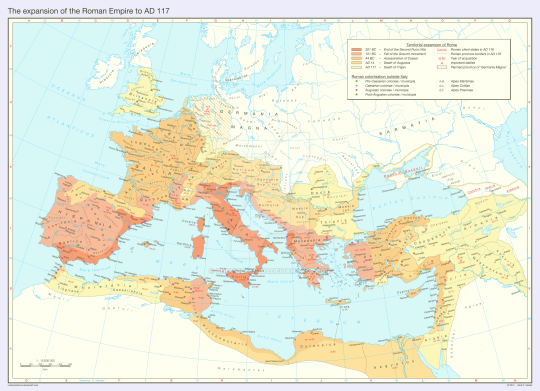
The expansion of the Roman Empire to AD 117.
by Undevicesimus
From its humble origins as a group of villages on the Tiber in the plains of Latium, Rome came to control one of the greatest empires in history, reaching from the Atlantic Ocean to the Tigris and from the North Sea to the Sahara Desert. Its extensive legacy continues to serve as a lowest common denominator not only for the nations and peoples within its erstwhile borders, but much of the modern world at large. Roman law is the foundation for present-day legal systems across the globe, the Latin language survives in the Romance languages spoken on both sides of the Atlantic Ocean and beyond, Roman settlements developed into some of Europe’s most important cities and stood model for many others, Roman architecture left some of history’s finest manmade landmarks, Christianity – the Roman state religion from AD 395 – remains the world’s dominant faith and Rome continues to feature prominently in Western popular culture…
Rome rose in a geographically favourable location: on the left bank of the Tiber, not too far from the sea but far enough inland to be able to control important trade routes in central Italy: southwest from the Apennines alongside the Tiber, and from Etruria southeast into Latium and Campania. In later ages, the Romans always had much to tell about the founding and early history of their city: tales about the twin brothers Romulus and Remus being raised by a she-wolf, the founding of Rome by Romulus on 21 April 753 BC and the reign of the Seven Kings (of which Romulus was the first). According to Roman accounts, the last King of Rome – Tarquinius Superbus – was expelled in 510 BC, after which the Roman aristocracy established a republic ruled by two annually elected magistrates (Latin: pl. consulis) with the support of the Senate (Latin: senatus), a council made up of the leaders of the most prominent Roman families. Often at odds with their neighbours, the Romans considered military service one of the greatest contributions common people could make to the state and the easiest way for a consul to gain both power and prestige by protecting the republic.
The Romans booked their first major triumph by conquering the Etruscan city Veii in 396 BC and went on to defeat most of the Latin cities in central Italy by 338 BC, despite the Celtic sack of Rome in 387 BC. Throughout the second half of the fourth century BC, the republic expanded in two different ways: direct annexation of enemy territory and the creation of a complex system of alliances with the peoples and cities of Italy. Shortly after 300 BC, nearly all the peoples of Italy united to stop Roman expansion once and for all – among them the Samnites, Umbrians, Etruscans and Celts. Rome obliterated the coalition in the decisive Battle of Sentinum (295 BC) and thus became the strongest power in Italy. By 264 BC, Rome controlled the Italian peninsula up to the Po Valley and was powerful enough to challenge its principal rival in the western Mediterranean: Carthage. The First Punic War began when the Italic people of Messana called for Roman help against both Carthage and the Greeks of Syracuse, a request which was accepted surprisingly quickly. The Romans allied with Syracuse, conquered most of Sicily and narrowly defeated the Carthaginian navy at Mylae in 264 BC and Ecnomus in 256 BC – the largest naval battles of Antiquity. Roman fleets gained a decisive victory off the Aegates Islands in 241 BC, ending the war and forcing the Carthaginians to abandon Sicily. Taking advantage of Carthage’s internal troubles, Rome seized Sardinia and Corsica in 238 BC.
Rome’s frustration at Carthage’s resurgence and subsequent conquests in Spain sparked the Second Punic War, in which the Carthaginian commander Hannibal crossed the Alps and invaded the Italian peninsula. The Romans suffered massive defeats at the Trebia in 218 BC, Lake Trasimene in 217 BC and most famously at Cannae in 216 BC where over 50,000 Romans were slain – the largest military loss in one day in any army until the First World War. However, Hannibal failed to press his advantage and continued an increasingly pointless campaign in Italy while the Romans conquered the Carthaginian territory in Spain and ultimately brought the war to Africa. Hannibal’s army made it back home but was decisively defeated by Scipio Africanus at the Battle of Zama in 202 BC, securing Rome’s hard-fought victory in arguably the most important war in Roman history.
Firmly in command of much of the western Mediterranean, Rome turned its attention eastwards to Greece. Less than fifty years after the Second Punic War, Rome had crushed the Macedonian kingdom – an erstwhile ally of Hannibal – and formally annexed the Greek city-states after the destruction of Corinth in 146 BC. That very same year, the Romans finished off the helpless Carthaginians in much the same way, burning the city of Carthage to the ground and annexing its remaining territory into the new province of Africa. With Carthage, Macedon and the Greek cities out of the way, Rome was free to deal with the Hellenic kingdoms in Asia Minor and the Middle East, the remnants of Alexander the Great’s empire. In 133 BC, Attalus III of Pergamum left his realm to Rome by testament, gaining the Romans their first foothold in Asia.
As the Romans expanded their borders, the unrest back in Rome and Italy increased accordingly. The wars against Carthage and the Greeks had seriously crippled the Roman peasants whom abandoned their home to campaign for years in distant lands, only to come back and find their farmland turned into a wilderness. Many peasants were thus forced to sell their land at a ridiculously low price, causing the emergence of an impoverished proletarian mass in Rome and an agricultural elite in control of vast swathes of countryside. This in turn disrupted army recruitment, which heavily relied on middle class peasants who were able to afford their own arms and armour.
Two possible solutions could remove this problem: a redistribution of the land so that the peasantry remained wealthy and large enough to be able to afford their military equipment and serve in the army, or else allowing the proletarian masses to enter military service and make the army into a professional body. However, both options would threaten the position of the Roman Senate: a powerful peasantry could press calls for more political influence and a professional army would bind soldiers’ loyalty to their commander instead of the Senate. The senatorial elite thus stubbornly clung to the existing institutions which were undermining the republic they wanted to uphold. More importantly, the Senate’s attitude and increasingly shaky position, in addition to the growing internal tensions, created a perfect climate for overly ambitious commanders seeking to turn military prestige gained abroad into political power back home.
Roman successes on the frontline nevertheless continued: Pergamum was turned into the province of Asia in 129 BC, Roman forces sacked the city of Numantia in Spain that same year, the Balearic Islands were conquered in 123 BC, southern Gaul became the new province of Gallia Narbonensis in 121 BC and the Berber kingdom of Numidia was dealt a defeat in the Jughurtine War (112 – 106 BC). The latter conflict provided Gaius Marius the opportunity to reform his army without senatorial approval, allowing proletarians to enlist and creating a force of professional soldiers who were loyal to him before the Senate. Marius’ legions proved their efficiency at the Battles of Aquae Sextiae in 102 BC and Vercellae in 101 BC, virtually annihilating the migratory invasions of the Germanic Cimbri and Teutones. Marius subsequently used his power and prestige to secure a land distribution for his victorious forces, thus setting a precedent: any successful commander with an army behind him could now manipulate the political theatre back in Rome.
Marius was succeeded as Rome’s leading commander by Lucius Cornelius Sulla, who gained renown when Rome’s Italic allies – fed up with their unequal status – attempted to renounce their allegiance. Rome narrowly won the ensuing Social War (91 – 88 BC) and granted the Italic peoples full Roman citizenship. Sulla left for the east in 86 BC, where he drove back King Mithridates of Pontus, whom had sought to benefit from the Social War by invading Roman territories in Asia and Greece. Sulla marched on Rome itself in 82 BC, executed many of his political enemies in a bloody purge and passed reforms to strengthen the Senate before voluntarily stepping down in 79 BC.
Sulla’s retirement and death one year later allowed his general Pompey to begin his own rise to prominence. Following his victory in the Sertorian War in 72 BC, Pompey eradicated piracy in the Mediterranean Sea in 67 BC and led a campaign against Rome’s remaining eastern enemies in 66 BC. Pompey drove Mithridates of Pontus to flight, annexed Pontic lands into the new province of Bithynia et Pontus and created the province of Cilicia in southern Asia Minor. He proceeded to destroy the crumbling Seleucid Empire and turned it into the new province of Syria in 64 BC, causing Armenia to surrender and become a vassal of Rome. Pompey’s legions then advanced south, took Jerusalem and turned the Hasmonean Kingdom in Judea into a Roman vassal as well. Upon his triumphant return to Rome in 61 BC, Pompey made the significant mistake of disbanding his army with the promise of a land distribution, which was refused by the Senate in an attempt to isolate him. Pompey then concluded a political alliance with the rich Marcus Licinius Crassus and a young, ambitious politician: Gaius Julius Caesar.
The purpose of this political alliance – known in later times as the First Triumvirate – was to get Caesar elected as consul in 59 BC, so that he could arrange the land distribution for Pompey’s veterans. In return, Pompey would use his influence to make Caesar proconsul and thus give him the chance to levy his own legions and become a man of power in the Roman Republic. Crassus, the richest man in Rome, funded the election campaign and easily got Caesar elected as consul, after which Caesar secured Pompey’s land distribution. Everything went according to plan and Caesar was made proconsul of Gaul for five years, starting in 58 BC. In the following years, Caesar and his legions systematically conquered all of Gaul in a war which has been immortalised in the accounts of Caesar himself (‘Commentarii De Bello Gallico’). Despite fierce resistance and massive revolts led by the Gallic warlord Vercingetorix, the Gallic tribes proved unable to inflict a decisive defeat on the Romans and were all subdued or annihilated by 51 BC, leaving Caesar’s power and prestige at unprecedented heights.
With Crassus having fallen at the Battle of Carrhae against the Parthians in 53 BC, Pompey was left to try and mediate between Caesar and the radicalised Roman proletariat on one side and the politically hard-pressed Senate on the other. However, Pompey had once been where Caesar was now – the champion of Rome – and ultimately chose to side with the Senate, realising his own greatness had become overshadowed by Caesar’s staggering military successes and popularity among the masses. When Caesar’s term as proconsul ended, the Senate demanded that he step down, disband his armies and return to Rome as a mere citizen. Though it was tradition for a Roman commander to do so, rendering Caesar theoretically immune from any senatorial prosecution, the existing political situation made such demands hard to meet. Caesar instead offered the Senate to extend his term as proconsul and leave him in command of two legions until he could be legally elected as consul again. When the Senate refused, Caesar responded by crossing the Rubicon – the northern border of Roman Italy which no Roman commander should cross with an army – and marched on Rome itself in 49 BC.
Pompey and most of the senators fled to Dyrrhachium in Greece and assembled their forces while Caesar turned around and conducted a lightning campaign in Spain, defeating the legions loyal to Pompey at the Battle of Ilerda. Caesar crossed the Adriatic Sea in 48 BC, narrowly escaping defeat by Pompey at Dyrrhachium and retreating south. Pompey clumsily failed to press his advantage and his forces were in turn decisively defeated by Caesar at the Battle of Pharsalus on 6 June 48 BC.
Pompey fled to Egypt in hopes of being granted sanctuary by the young king Ptolemy XIII, who instead had him assassinated in an attempt at pleasing Caesar, who was in pursuit. Ptolemy XIII was driven from power in favour of his older sister Cleopatra VII, with whom Caesar had a brief romance and his only known son, Caesarion. In the spring and summer of 47 BC, another lightning campaign was launched northwards through Syria and Cappadocia into Pontus, securing Caesar’s hold on Rome’s eastern reaches and decisively defeating the forces of Pharnaces II of Pontus, who had attempted to profit from Rome’s internal strife. Caesar invaded Africa in 46 BC and cleared Pompeian forces from the region at the Battles of Ruspina and Thapsus before returning to Spain and defeating the last resistance at the Battle of Munda in 45 BC.
Caesar subsequently began transforming the Roman government from a republican one meant for a city-state to an imperial one meant for an empire. Major reforms were required to achieve this, many of which would be opposed by Caesar’s political enemies. This was a problem because several of these people enjoyed significant political influence and popular support (cf. Cicero) and while none of them could really challenge Caesar individually and publicly, collectively and secretly they could be a serious threat. To render his enemies politically impotent, Caesar consolidated his popularity among the Roman masses by passing reforms beneficial to the proletariat and enlarging the Senate to ensure his supporters had the upper hand. He then manipulated the Senate into granting him a number of legislative powers, most prominently the office of dictator for ten years, soon changed to dictator perpetuus. Though widely welcomed by the masses, Caesar’s reforms and legislative powers dismayed his political opponents, whom assembled a conspiracy to murder him and ‘liberate’ Rome. The conspirators, of whom Brutus and Cassius are the most famous, were successful and Caesar was brutally stabbed to death on 15 March 44 BC.
Caesar’s death left a power vacuum which plunged the Roman world into yet another civil war. In his testament, Caesar adopted as his sole heir his grandnephew Gaius Octavius, henceforth known as Gaius Julius Caesar Octavianus (Octavian, in English). Despite being only eighteen, Octavian quickly secured the support of Caesar’s legions and forced the Senate to grant him several legislative powers, including the consulship. In 43 BC, Octavian established a military dictatorship known as the Second Triumvirate with Caesar’s former generals Mark Antony and Marcus Lepidus. Caesar’s assassins had meanwhile fled to the eastern provinces, where they assembled forces of their own and subsequently moved into Greece. Octavian and Antony in turn invaded Greece in 42 BC and defeated them at the Battles of Philippi.
Octavian, Antony and Lepidus then divided the Roman world between them: Octavian would rule the west, Antony the east and Lepidus the south with Italy as a joint-ruled territory. However, Octavian soon proved himself a brilliant politician and strategist by quickly consolidating his hold on both the western provinces and Italy, smashing the Sicilian Revolt of Sextus Pompey (son of) in 36 BC and ousting Lepidus from the Triumvirate that same year.
Meanwhile, Antony consolidated his position in the east but made the fatal mistake of becoming the lover of Cleopatra VII. In 32 BC, Octavian manipulated the Senate into a declaration of war upon Cleopatra’s realm, correctly expecting Antony would come to her aid. The two sides battled at Actium on 2 September 31 BC, resulting in a crushing victory for Octavian, despite Antony and Cleopatra escaping back to Egypt. Octavian crossed into Asia the following year and marched through Asia Minor, Syria and Judea into Egypt, subjugating the eastern territories along the way. On 1 August 30 BC, the forces of Octavian entered Alexandria. Both Antony and Cleopatra perished by their own hand, leaving Octavian as the undisputed master of the Roman world.
Octavian assumed the title of Augustus in January 27 BC and officially restored the Roman Republic, although in reality he reduced it to little more than a facade for a new imperial regime. Thus began the era of the Principate, named after the constitutional framework which made Augustus and his successors princeps (first citizen), commonly referred to as ‘emperor’, and which would last approximately two centuries. Augustus nevertheless refrained from giving himself absolute power vested in a single title, instead subtly spreading imperial authority throughout the republican constitution while simultaneously relying on pure prestige. Thus he avoided stomping any senatorial toes too hard, remembering what had happened to Julius Caesar.
Augustus and his successors drew most of their power from two republican offices. The title of tribunicia potestes ensured the emperor political immunity, veto rights in the Senate and the right to call meetings in both the Senate and the concilium plebis (people’s assembly). This gave the emperor the opportunity to present himself as the guardian of the empire and the Roman people, a significant ideological boost to his prestige. Secondly, the emperor held imperium proconsulare. Imperium implied the emperor’s governorship of the so-called imperial provinces, which were typically border provinces, provinces prone to revolt and/or exceptionally rich provinces. These provinces obviously required a major military presence, thereby securing the emperor’s command of most of the Roman legions. The title was proconsulare because the emperor enjoyed imperium even without being a consul. The emperor furthermore interfered in the affairs of the (non-imperial) senatorial provinces on a regular basis and gave literally every person in the empire the theoretical right to request his personal judgement in court cases. Roman religion was also brought under the emperor’s wings by means of him becoming pontifex maximus (supreme priest), a position of major ideological importance. On top of all this, the Senate frequently granted the emperor additional rights which enhanced his power even more: supervision over coinage, the right to declare war or conclude peace treaties, the right to grant Roman citizenship, control over Roman colonisation across the Mediterranean, etc. The emperor was thus the supreme administrator, commander, priest and judge of the empire – a de facto absolute ruler, but without actually being named as such. It is worth noting that Augustus and most of his immediate successors worked hard to play along in the empire’s republican theatre, which gradually faded as the centuries passed.
The most important questions nonetheless remained the same for a long time after Augustus’ death in AD 14. Could the emperor keep himself in the Senate’s good graces by preserving the republican mask? Or did he choose an open conflict with the Senate by ruling all too autocratically? Even a de facto absolute ruler required the support and acceptance of the empire’s elite class, the lack of which could prove to be a serious obstacle to any imperial policies. The relationship between the emperor and the Senate was therefore of significant importance in maintaining the political work of Augustus, particularly under his immediate successors. The first four of these were Tiberius, Caligula, Claudius and Nero – the Julio-Claudian dynasty. Tiberius was chosen by Augustus as successor on account of his impressive military service and proved to be a capable (if gloomy) ruler, continuing along the political lines of Augustus and implementing financial policies which left the imperial treasuries in decent shape at his death in AD 37 and Caligula’s accession. Despite having suffered a harsh youth full of intrigues and plotting, Caligula quickly gained the respect of the Senate, the army and the people, making a hopeful entry into the Principate. Yet continuous personal setbacks turned Caligula bitter and autocratic, not to say tyrannical, causing him to hurl his imperial power head-first into the senatorial elite and any dissenting groups (most notably the Jews). After Caligula’s assassination in AD 41, the position of emperor fell to his uncle Claudius who, despite a strained relationship with the Senate, managed to play the republican charade well enough to implement further administrative reforms and successfully invade the British Isles to establish the province of Britannia from AD 43 onward. But the Roman drive for expansion had been somewhat tempered after Augustus’ consolidating conquests in Spain, along the Danube and in the east. The Romans had practically turned the Mediterranean Sea into their own internal sea (Mare Internum or Mare Nostrum) and thus switched to territorial consolidation rather than expansion. However, the former was still often accomplished by the latter as multiple vassal states (Judea, Cappadocia, Mauretania, Thrace etc.) were gradually annexed as new Roman provinces. Actual wars of aggression nevertheless ceased to be a main item on the Roman agenda and indeed, the policies of consolidation and pacification paved the way for a long period of internal peace and stability during the first and second centuries AD – the Pax Romana. This should not be idealised, though. On the local level, violence was often one of the few stable elements in the lives of the common people across the empire. Especially among the lowest ranks of society, crimes such as murder and thievery were the order of the day but were typically either ignored by the Roman authorities or answered with brute force. Moreover, the Romans focused on safeguarding cities and places of major strategic or economic importance and often cared little about maintaining order in the vast countryside. Unpleasant encounters with brigands, deserters or marauders were therefore likely for those who travelled long distances without an armed escort. At the empire’s frontiers, the Roman legions regularly fought skirmishes with their local enemies, most notably the Germanic tribes across the Rhine-Danube frontier and the Parthians across the Euphrates. Despite all this, the big picture of the Roman world in the first and second centuries AD is indeed one of lasting stability which could not be discredited so easily.
The real threat to the Pax Romana existed not so much in local violence, shady neighbourhoods or frontier skirmishes but rather in the highest ranks of the imperial court. The lack of both dynastic and elective succession mechanisms had been the Principate’s weakest point from the outset and would be the cause of major internal turmoil on several occasions. Claudius’ successor Nero succeeded in provoking both the Senate and the army to such an extent that several provincial governors rose up in open revolt. The chaos surrounding Nero’s flight from Rome and death by his own hand plunged the empire into its first major succession crisis. If the emperor lost the respect and loyalty of both the Senate and the army, he could not choose a successor, giving senators and soldiers a free hand to appoint the persons they considered suitable to be the new emperor. This being the exact situation upon Nero’s death in AD 68, the result was nothing short of a new civil war.
To further add to the catastrophe, the civil war of AD 68/69 (the Year of Four Emperors) allowed for two major uprisings to get out of hand – the Batavian Revolt near the mouths of the Rhine and the First Jewish-Roman War in Judea. Both of these were ultimately crushed with significant difficulties, especially in Judea where Jewish religious-nationalist sentiments capitalised on existing political and economic unrest. Though the Romans achieved victory with the destruction of Jerusalem in AD 70 and the expulsion of the Jews from the city, Judea would remain a hotbed for revolts until deep into the second century AD. The fact that major uprisings arose at the first sign of trouble within the empire might cause one to wonder about the true nature of the Pax Romana. Was it truly the strong internal stability it is popularly known to be? Or was it little more than a forced peace, continuously threatened by socio-economic and political discontent among the many different peoples under the Roman yoke? Though a bit of both, the answer definitely leans towards the former hypothesis. While the Pax Romana lasted, unrest within the empire remained limited to a few hotbeds with a history of resisting foreign conquerors. Besides the obvious example of the Jewish people in Judea, whose anti-Roman sentiments largely stemmed from their unique messianic doctrines, large-scale resistance against the Romans was scarce. It is true that the incorporation and Romanisation of unique societies near the empire’s northern frontiers led to severe socio-economic problems and subsequent uprisings, most notably Boudica’s Rebellion in Britain (AD 60 – 61) and the aforementioned Batavian Revolt near the mouths of the Rhine. Nevertheless, it is safe to assume that the Pax Romana was strong enough to outlast a few pockets of rebellion and even a major succession crisis like the one of AD 68/69.
The Year of the Four Emperors ultimately brought to power Vespasian, founder of the Flavian dynasty (AD 69 – 96) and architect of an intensified pacification policy throughout the empire. These policies were fruitful and strengthened the constitutional position of the emperor, not in the least owing to the fact that Vespasian’s sons and successors Titus and Domitian were as capable as their father. However, their skills did not prevent Titus and especially Domitian from bickering with the senatorial elite over the increasingly obvious monarchical powers of the emperor. In the case of the all too authoritarian Domitian, the conflict escalated again and despite his competent (if ruthless) statesmanship, Domitian was murdered in AD 96. A new civil war was prevented by diplomatic means: Nerva emerged as an acceptable emperor to both the Senate and the army, especially when he adopted the popular Trajan as his son and heir. Thus began the reign of the Nerva-Antonine dynasty (AD 96 – 192). Having succeeded Nerva in AD 98, Trajan once more steered the empire onto the path of aggressive expansion, leading the Roman legions across the Danube to crush the Dacians and establish the rich province of Dacia in AD 106. Subsequently, the Romans seized the initiative in the east, drove back the Parthians and advanced all the way to the Persian Gulf (Sinus Persicus). Trajan annexed Armenia in AD 114 and turned the conquered Parthian lands into the new provinces of Mesopotamia and Assyria in AD 116. Trajan died less than a year later on 9 August AD 117, his staggering military successes having brought the Roman Empire to its greatest extent ever…
94 notes
·
View notes
Text
Eye Candy - pt one
Steve and Robin move to a big city on the coast after Robin graduates from her college classes with a degree in the arts.
It’s an impulsive decision, like many of theirs are. The kids are leaving for college, they’ve been fired from their jobs- Steve publicly chewed out a customer who made a gross comment about Robin’s chest- and neither of them particularly want to keep staying in their childhood homes still in their early twenties.
So they pick a city, cram their combined belongings into a car, and spend the better part of a few days slowly driving across country.
It takes a while because Steve insists on stopping at multiple cheesy landmarks on the way, much to Robin’s theatric dismay.
But they get there and they settle in and they… love it. They find an industrial style apartment that they can see the water from- over a handful of other brick buildings, anyway- and get new jobs at a musical diner. Turns out they can both sing, and Steve looks great in his tiny red shorts and rollerblades.
They spend their mornings arguing over what shape is superior to cook batter in (Robin is team waffle, Steve is team pancake) and giggling over the celebrity gossip section like teen girls. More often than not, they end up crashing in Robin’s bed at night even though they have separate bedrooms. It’s wonderful.
But one night, they are so incredibly bored.
They get all dressed up just to pass the time, doing little model walks out to the living room, striking poses, taking goofy pictures to cover the walls in. The outfits turn out honestly kind of great and it feels like a waste not to go anywhere. So they do.
The original plan was to go to this queer club they found in their first week here, the entrance to which was. hidden inside the dry storage room of an Italian restaurant. However, they take a detour through the rich neighborhoods to ogle the stupidly big houses they couldn’t afford even with twenty pooled years of diner salary, making fun of the absurdly shaped topiaries and obnoxiously shiny cars that made Steve’s look like a junk heap.
That’s when they get a reckless idea.
One of the houses a little separate from the others is a mansion with music thrumming from inside and flashing colourful lights, with a guard dressed in all black standing at the front door.
“Are you thinking what I’m thinking?”
They blurted at the same time, slowing the car to a stop.
Minutes later, Steve strolled down the long, perfectly even paving stones set into the emerald lawn with an updated, adult version of his signature King Steve ‘I belong everywhere I show up’ face.
He was dressed in a loose silk shirt and dark wash jeans, hazel eyes rimmed in kohl and hair artfully messed on top of his head. Robin had caved into his suggestions earlier, dressed in an eggshell bustier- that she kept awkwardly adjusting where it dug into her side- and black slacks with gold buttons up the legs.
They don’t look underdressed for the place, at least.
Steve gets stopped by the guard almost immediately and asked for his name, and Robin starts to sweat. She’s ready to apologize and say they must have accidentally come to the wrong place.
But Steve just scoffs, hand on his hip, with a righteously offended look on his face. “Excuse me?” He asks, tone dripping false condescension. “Are you seriously asking who I am?”
The guard looks nervous, immediately shuffling with his papers presumably carrying the guest list. A vein throbs in his temple and he flits his gaze between Robin and Steve in their dressy clothes and the door behind him.
What kind of people were at this party that the guard was that nervous about not recognizing someone?
The guard glances subtly at the list again and Robin can see there are only two names not checked off the list.
“No, sir. Of course I recognize you…” The guard trails awkwardly as he lies, “trick of the light, couldn’t see your face before. Come on in, my apologies.”
He checks off both names on the list, without asking again.
That worked?
Robin gave Steve a baffled side eye as they entered the house, to which he simply shrugged.
“My mother always said to pretend I belonged anywhere I went with conviction. She said people would wittle out a spare chair for me with a spoon rather than admit they don’t know why I’m there.”
Robin snorted. “Rich people.”
Steve just barely resisted the urge to elbow her in the ribs. “At least if I was still rich, we wouldn’t have wrestled over the last banana this morning.”
But then he paused, eyes taking in the other scattered guests.
“Hey uh… is it just me or is everyone here-“
“Insanely hot?” Robin finished his sentence, sticking close to his side as she looked around. “Steve where the hell are we?”
Steve didn’t have an answer for her, scanning the crowd of ridiculously attractive people in expensive outfits, mingling and dancing to the music playing from a speaker he couldn’t find in the massive, open concept first floor.
He didn’t get long to try and figure it out, however.
A low, faintly amused voice chimed in from a few feet away. “That’s the question, isn’t it?” The mystery person answered Robin’s query as Steve spun to face them, pulse spiking.
“I certainly would remember a face like that, especially since I made the guest list. So my return question is… how did you get into my house?”
#billy antis dni#steve harrington#billy hargrove#eventual#harringrove#model!billy#model!heather#robin buckley#also eventual#buckleway#heather x robin#billy x steve#🌌 — a s t e r#🌌 — w r i t i n g#Eye Candy ficlet
47 notes
·
View notes
Photo

My goal is never to copy. Create a new style, clear luminous colours and feel the elegance of the models.
- Tamara de Lempicka (1898-1980)
The painter Tamara de Lempicka was nicknamed ‘the baroness with a paintbrush’. In the années folles between the two World Wars, she flitted between the Ritz Hotel in Paris and the Grand Hotel in Monte Carlo, socialising with - and capturing on canvas - her era’s elite. She counted Queen Elizabeth of Greece, King Alfonso XIII of Spain, and the Italian poet-prince Gabriele d’Annunzio among her sitters. As Jean Cocteau put it, Lempicka ‘loved art and high society in equal measure’.
She was renowned for an Art Deco style which oozed cool chic and elegant sensuality. Portraiture was her genre, featuring stylised subjects bedecked in seductive textures and bathed in flattering light. For some works, Lempicka used herself as model, which made sense given she wore clothes by Coco Chanel and was occasionally mistaken in public for Greta Garbo. ‘Among a hundred paintings,’ she claimed, ‘you could always recognise mine’.
#lempicka#tamara de lempicka#quote#polish#artist#french#paris#parisian#art deco#art#style#europe#france#beauty#arts#culture
119 notes
·
View notes
Text
@allhallowsthemepark @shaydystheshadowqueen
Ideas for the Ghoul City food court
Frankenburger menu
Frankenburger: the signature dish of this 50s diner inspired joint, consisting of an 8oz angus beef patty, flame grilled and topped with sharp cheddar cheese, iceberg lettuce, tomato, purple onions, ketchup, Dijon mustard, and butter pickles. Put in between 2 fluffy brioche buns with sesame seeds on top. Served with crinkle cut fries and a fountain drink.
Bride of Frankenburger: instead of cheddar, there’s Gouda,and bacon instead of tomato. Served with fries and a drink.
The Doc’s Mini Sliders: kids can create their own miniature monster of meat with this option! Choices for cheese include American, Havarti, and Baby Swiss. They even come with little toothpicks shaped like electric pylons!
Jiangshi Midnight Wok menu
Jiangshi noodles: basic Chinese Lo mein with all the vegetables and meat that come with it.
White Tiger Fried Rice: Fried rice with Chicken, Beef, and Shrimp.
Phoenix curry: super spicy chicken curry served with white rice, not for the faint of heart.
Sun Wukong Peach custard Bao: named for the legendary sage of heaven from Journey to the west, these sweet treats are modeled after the peaches enjoyed by the Monkey king and his subjects on Flower Fruit Mountain. Peach custard wrapped in sweet rice dough and steamed in a bamboo basket.
Spucci’s Pizza menu
Pizza Margherita
Pepperoni pizza
Cheese Pizza
Spucci’s Spicy Special: topped with spicy Italian sausage, Red Peppers and Pepperjack cheese, this firey dish will slash your tastebuds like teenagers at abandoned summer camps.
Kraken Seafood Shack: located on Gilman Municipal Beach, this restaurant offers fresh seafood.
Kraken’s Salty special: beer and bread battered flounder deep fried with a side of tartar sauce, onion rings, and a small salad.
Frightful Fish Filet: Breaded deep fried Whitefish put in between two slices of whole wheat bread and dotted with mayonnaise and red slaw.
Sunken Shrimp: Cocktail shrimp with a sauce mixing traditional cocktail sauce with mayo and pineapple juice. Covered in shredded coconut.
Just don’t ask for Calamari here, the boss is very sensitive about that.
9 notes
·
View notes